El Garmin 920xt tiene una difícil tarea, igualar a su predecesor, el exitoso 910xt; y por supuesto superarlo. Para ello Garmin ha dotado al 920xt de todas las novedades que hemos ido viendo en sus productos de diferentes gamas (e incluso de otros deportes) para crear el modelo más completo hasta la fecha. Con respecto al 910xt, recibe la dinámica de carrera estrenada en el Garmin 620, así como su sincronización WiFi; la función de LiveTrack que ya estaba presente en otros relojes (incluso de gama inferior como el 220) como en las unidades de ciclismo Edge; funciones de reloj inteligente con notificaciones del teléfono como vimos en el Garmin Fenix 2; hasta un monitor de actividad y sueño, como en las pulseras Vivofit. Y como no podía llegar al mercado sin ofrecer ninguna novedad exclusiva, el Garmin 920xt ha sido el primero en unirse a la plataforma Connect IQ, a la que pronto se han unido otros nuevos modelos..
Garmin ha creado el reloj más completo de su historia, y uno de los relojes con más prestaciones del mercado. Han combinado en un mismo producto un dispositivo en entrenamiento y competición, junto a un reloj de uso diario (algo que el 910xt no ofrecía) que también monitorizará tu actividad diaria y mostrará las notificaciones de tu teléfono móvil.
Como siempre me gusta aclarar, en esta ocasión el reloj ha sido cedido por Garmin para el desarrollo de la prueba, y una vez terminada se lo enviaré de vuelta.
Espero que disfrutes con esta completa review del Garmin 920xt y te ayude en tu decisión de compra. Si te decides a comprarlo y quieres echarme una mano para que pueda realizar más pruebas como ésta, cómpralo en Amazon a través de este enlace. Tu tendrás el mejor precio posible y a mi me reportarán una pequeña comisión que ayudará con las siguientes pruebas.
Navegar a secciones específicas
- Desempaquetado
- Configuración inicial
- Correr
- Ciclismo
- Natación
- Modo triatlón
- Navegación
- Entrenamiento en interior
- Entrenamientos avanzados
- VO2Max, control de recuperación y pronóstico de carrera
- Alertas
- Sensores integrados y accesorios externos
- Monitor de actividad
- Recepción de satélites
- Autonomía
- Iluminación
- Garmin 920xt, el reloj de diario
- Garmin 920xt, el smartwatch
- Connect IQ
- Conectividad
- Garmin Connect
- Mi opinión
- ¿Te ha gustado la prueba?
- Comprar Garmin 920xt
- VALORACIÓN
Desempaquetado
El Garmin 920xt se presenta en una caja de reducidas dimensiones. El tono de la caja va a juego con el color del reloj, por lo tanto si vosotros compráis la versión negra y azul, la caja tendrá esas tonalidades. Además, también especifica en la parte delantera que se trata de la unidad que incluye el sensor HRM-Run.
Mirándolo desde atrás, verás algunos detalles a destacar. Es un reloj de triatlón, con dinámica de carrera y piscina. Permite poner cuatro datos por pantalla y además calcula tu nivel de VO2Max.
El contenido es bastante escueto. Además del reloj, tendrás los manuales y el cable de carga y sincronización. Y en el caso que nos ocupa, el sensor HRM-Run (que se diferencia del normal por el «monigote» de color blanco) junto con la cinta pectoral Garmin Premium.
Vamos a quitar todos los plásticos, para ver mejor todo lo que trae.
El material en el que está fabricado el reloj es plástico. Pero plástico tipo «Casio». Es decir, que te has dejado una pasta en tu nuevo reloj y la sensación que te da es de reloj barato. Pero esto hace que a pesar del gran tamaño del reloj (48x55mm), no se sienta pesado en la muñeca (61g). Eso si, la correa de goma si da muy buena sensación, es cómoda y en actividades más exigentes como la natación se muestra segura en todo momento y no te da la sensación de poder perderlo en cualquier brazada.
El 920xt cuenta con un total de seis botones, dos a la izquierda, dos en el centro, dos a la derecha (espero que hayas leído esto con voz de sobrecargo de avión).
En el lado izquierdo tendrás el botón de iluminación, que servirá también para encender y apagar el reloj, y debajo el botón de modo, que presionarás para desbloquear la pantalla, cambiar de una pantalla a otra, activar opciones secundarias o bloquear la pantalla.
En el otro lado, los botones de subir y bajar y en el frontal el de «back», para volver al menú anterior y marcar vueltas, y el de «enter» para iniciar o parar una actividad o para hacer selecciones en el menú.
A pesar de tener una batería capaz de aguantar hasta 24h, el grosor se queda en 12,7mm. Que no es poco, pero no se hace incómodo. La pantalla tiene una buena resolución de 205×148 píxeles y la reproducción de los colores va mejorando con cada nuevo modelo que lanza Garmin. No tiene nada que ver con la pantalla de colores «lavados» del Garmin 620, pero tampoco es la pantalla de tu móvil.
En la parte trasera (que también es de plástico) encuentras los pines de sincronización y carga. No te preocupes porque sean visibles, no tiene problemas con el agua y es sumergible hasta 100m.
Configuración inicial
Antes de empezar a correr lo primero que debes hacer es configurar las pantallas de datos que deseas llevar. En el Garmin 920xt puedes configurar 4 pantallas con hasta 4 datos en cada una de ellas; y además tienes la posibilidad de añadir pantallas adicionales para mapa, virtual partner, dinámica de carrera (para perfiles de carrera), registro de ejercicios de técnica (en natación) y reloj.
En cada pantalla de datos puedes poner entre 1 y 4 campos diferentes. El tamaño de los campos es variable, así que cuantos menos pongas en cada página, más grande se verá. A mi me gusta llevar siempre el ritmo en grande, para poder verlo de un vistazo rápido.
Pero siempre tienes la posibilidad de dejar una pantalla para disponer de muchas métricas, para consultas más completas.
O si quieres crearte un perfil de competición donde no quieres ninguna información más que uno o dos datos para verlos rápidamente.
Muchas configuraciones posibles que se adaptarán a cada uso particular. Son independientes entre perfiles de deportes, así que debes configurar cada uno por separado con los datos que te vayan a interesar para cada disciplina. Por defecto, estos son los perfiles de actividad que puedes encontrar en el menú:
- Carrera
- Carrera en interior (GPS desactivado)
- Ciclismo
- Ciclismo en interior (GPS desactivado)
- Natación en aguas abiertas
- Natación en piscina (GPS desactivado)
- Triatlón
Y adicionalmente podrás añadir otros perfiles, cada uno especificado de una manera particular. Es decir, puedes añadir un perfil de ciclismo desde el menú Configuración > Perfiles de la actividad > Añadir nuevo > Ciclismo, y podrás elegir entre diferentes variedades, como rodillo, carretera, montaña, competición, etc. Todo para facilitarte la elección del perfil y poder tener por ejemplo uno para entrenar y otro para competir, con menos datos y pantallas.
Por supuesto si alguno de los perfiles no te interesa, también puedes eliminarlo del menú. Así que si estás en Helsinki en febrero es poco probable que vayas a hacer natación en aguas abiertas. Podrás borrarlo y añadirlo cuando la temperatura del agua sea más propicia, salvo que seas un pingüino y disfrutes de las aguas congeladas.
En cuanto a los datos, en el menú de selección te indicará claramente en donde va a ir colocado el campo que estás modificando.
Estos son los datos que puedes seleccionar, totalmente a tu gusto.
[table id=28 /] [table id=29 /] [table id=30 /] [table id=31 /]Y además de todos esos campos de datos (que ya son muchos), podrás añadir cualquiera gracias a Connect IQ (sección que encontrarás más adelante).
Correr
Ya tienes el reloj configurado, así que lo siguiente que deberías pensar es en salir a correr. Lo primero que harás será desbloquear el reloj para hacer una búsqueda de satélites.
El Garmin 920xt tiene función de cacheo de satélites, por lo que tras cada sincronización que hagas (por cable, WiFi o Bluetooth) esta caché se actualizará. Además, el 920xt no sólo usa los satélites GPS, sino que también es compatible con satélites GLONASS, el sistema de posicionamiento ruso.
En este vídeo puedes comprobar cómo es la búsqueda de satélites, generalmente muy rápida. En este caso concreto tarda algo más de lo habitual; aún así, en menos de 20 segundos está listo para salir a correr. Lo habitual es que tarde alrededor de 10 segundos.
Lo siguiente que te interesa saber es cómo muestra el ritmo el Garmin 920xt, sobre todo a la hora de realizar cambios de ritmo. Para que lo puedas comprobar, te he preparado este otro video. Partiendo de parado acelero, para parar y vuelta a arrancar. El ritmo se ajusta rápido.
Como te habrás podido dar cuenta, el ritmo se contabiliza en múltiplos de 5, para evitar saltos constantes en el ritmo mostrado en pantalla. Es algo común en todos los relojes que Garmin está lanzando al mercado últimamente.
El Garmin 920xt añade la función de dinámica de carrera, algo que no es nuevo pues ya lo hemos visto en otros modelos de la gama alta de los americanos (FR620 y Fenix 2). La información que nos facilita es cadencia, tiempo de contacto con el suelo y desplazamiento vertical. Lo primero tampoco es nuevo, pues es algo ya visto en otros modelos. Las otras dos métricas si es algo exclusivo de los relojes de Garmin, y las tendremos sólo si tenemos el sensor de pulso HRM-Run. Dispone de un acelerómetro interno para obtener estos datos que enviará al reloj a través de un canal privado al que sólo Garmin tiene acceso (no es parte de la especificación ANT+), por lo que de momento sólo podrás analizarlo con tu reloj y no con aplicaciones de teléfono móvil, por ejemplo.
Estos datos los podrás ver en la pantalla del reloj si activas la página específica de dinámica de carrera, o si añades alguna de las tres métricas como un dato en alguna de las pantallas configuradas.
También dispondrás de estos datos en Garmin Connect una vez que sincronices tu actividad. Sin ser una métrica que le vayas a sacar mucho partido en tus entrenamientos, si te puede ayudar a entender tus evoluciones, tus ritmos o por qué un día has ido más rápido o te ha costado más trabajo aguantar el ritmo.
En esta imagen puedes ver un ejemplo de estas métricas. Se trata de una sesión de entrenamiento de intervalos variables, donde mejor podrás ver esos cambios que se producen en los datos obtenidos.
Una vez que hayas completado tu entrenamiento, y tras guardar la actividad, podrás acceder a todos los datos de tiempo, ritmos y distancia. Son los mismos datos que encontrarás en la opción de historial, donde puedes comprobar cómo ha sido tu entrenamiento, tanto en datos totales:
Como en datos por vuelta:
Por último, el Garmin 920xt llevará un registro de tus records personales. Y si al terminar una actividad superas alguno de ellos, también lo indicará en pantalla. Y también podrás encontrarlos en tus estadísticas.
Estos records serán para el kilómetro más rápido, milla, 5 km, 10 km, media maratón, maratón y distancia más larga. Quedarán guardados en el reloj y también se sincronizarán con Garmin Connect, así como podrás sincronizar los records que tuvieses previamente en Connect a tu nuevo 920xt.
Ciclismo
El funcionamiento del Garmin 920xt al montar en bicicleta es similar a cuando corremos. La diferencia es que nos mostrará velocidad en km/h (o millas/h) en lugar de ritmo, así que podrás poner el reloj en el manillar y usarlo como cuenta kilómetros. Para ello, es posible montarlo directamente con la correa sobre un soporte de manillar o bien instalar en el reloj el kit Quick Release, que será lo ideal para tus competiciones de triatlón ya que te permite cambiar el reloj de la muñeca al manillar de forma muy rápida, imprescindible para mantener unos tiempos de transición muy bajos.
A la hora de funcionar como cuenta kilómetros y actualizar la velocidad, se muestra muy rápido ante los cambios. En rutas despejadas y sin problemas de señal de satélite, el uso de un sensor de velocidad no será imprescindible. Un video donde podéis comprobarlo.
Donde destaca el Forerunner 920xt es en el soporte de sensores externos. Por supuesto podrás conectar el sensor de pulso, pero además se puede sincronizar con sensores ANT+ de velocidad/cadencia y medidores de potencia, independientemente del fabricante ya que ANT+ es un sistema abierto.
En la pantalla del reloj tendrás las métricas del medidor de potencia al completo. Si revisas los campos que puedes añadir para el perfil de la actividad, podrás ver que las posibilidades son muy extensas.
El 920xt también muestra el VO2max para el perfil de ciclismo, pero sólo lo hará si contamos con un medidor de potencia. Sin este accesorio el reloj no podrá calcularlo.
Debo recordarte que a pesar de que el reloj dispone de conectividad Bluetooth, sólo es posible usarlo para conectar con tu teléfono móvil, por lo que no podrás usar ningún sensor externo que utilice este tipo de conexión de forma exclusiva.
Natación
A la hora de ponerte en remojo con el Garmin 920xt, el reloj te ofrece dos opciones, aguas abiertas y natación en piscina.
Nadando en aguas abiertas
Nadar en aguas abiertas es todo aquello que no sea una piscina con una medida específica, y que esté a cielo abierto. Por tanto la bañera de casa no cuenta. Contarás con la ayuda del GPS para tener referencias de distancias recorridas así como tu ritmo, y a la hora de sincronizar, tener el plano de tu entrenamiento. Pero debes saber que no es tan sencillo como parece. Cada vez que des una brazada y metas el reloj bajo el agua se perderá la señal GPS, para recuperarla al sacarlo. La precisión de localización será baja. Por tanto la señal irá dando saltos continuamente, y aquí es donde entra el trabajo que tiene que realizar Garmin para que el reloj sea capaz de interpretar estos datos de localización.
El reloj debe ir memorizando estos datos y adivinar de dónde venimos y la dirección en la que estamos nadando, y a partir de ahí ser capaz de realizar los cálculos. Y no es nada fácil conseguirlo, pues cada vez que saques el reloj de debajo del agua deberá volver a buscar señal, y sólo tiene posibilidad de hacerlo durante el corto espacio de tiempo que lo mantienes fuera.
El resultado es que las distancias ofrecidas tendrán un error aproximado del 10%, algo que no se podrá mejorar tal. Ni siquiera los submarinos militares disponen de navegación guiada cuando se encuentran bajo el agua así que te puedes hacer a la idea de la dificultad de obtener señal.
Al igual que en el resto de actividades, podrás configurar la pantalla con los datos que precises oportunos, que serán tiempo, distancia, ritmo y brazadas. También podrás establecer auto lap a una distancia determinada o bien alertas por tiempo, distancia, velocidad de brazada o calorías.
Natación en piscina
La forma más habitual de entrenar será en piscina, para lo que disponemos de un modo específico. En este caso prescindimos del GPS para aprovecharnos del acelerómetro interno, que será el que cuente las brazadas y el número de largos, ya que detectará cuándo llegas al final de la calle y giras para comenzar un nuevo largo. Así que si quieres que cuente correctamente debes asegurarte de no hacer movimientos extraños porque el reloj puede entender lo que no es. Si saludas a la socorrista con la intención de ligar, puede ser que el reloj piense que has completado tres largos…
Cuando comienzas la actividad, lo primero que deberás hacer es seleccionar la distancia de la piscina dentro de la configuración de actividad. Aquí encontrarás medidas estándar o podrás introducir una medida personalizada. También puedes seleccionar que el reloj detecte tu estilo de nado, aunque en mis pruebas esta detección automática no ha funcionado de la forma esperada. Sí me ha detectado los estilos de crol y espalda sin ningún problema, pero braza y mariposa no.
Así que una vez que estás metido en el agua, no tienes más que pulsar el botón de «enter» para comenzar la actividad y ponerte a nadar. En la pantalla del reloj tendrás la información que tu hayas seleccionado en el perfil propio de actividad.
Cuando estés cansado y quieras hacer una pausa, puedes pulsar el botón de lap («back» en este caso) y pasarás al modo de descanso. Para volver a comenzar a nadar, tendrás que presionar el mismo botón.
En cuanto al modo natación, hay una curiosidad que comentar. Es posible conectar el monitor de pulso con el reloj, de hecho al inicio de la actividad permite la búsqueda y se conecta, mostrándolo en pantalla. Pero entre las opciones de campos de datos no es posible seleccionar la frecuencia cardíaca. Y tampoco quedará grabado o se sincronizará con Connect. Todo esto a través de Mio Link, ya que con el sensor de frecuencia de Garmin no sería posible ya que, debajo del agua, la señal no es capaz de llegar hasta el reloj.
Sí he encontrado algunos problemas a la hora de contar largos, y es que en algunas ocasiones y sin hacer ningún movimiento extraño, ha contado un largo cuando aún no lo he terminado, y no es sólo que en la piscina no me salgan las cuentas, es que claramente se puede ver en los intervalos marcados. Y estos no podrán ser modificados dentro de Garmin Connect, por lo que si hay algún error al contabilizar, así se quedará (salvo que edites el entrenamiento en otra aplicación).
En cuanto al resto de la actividad, una vez sincronizada podrás acceder a ella en Connect, donde tendrás las gráficas y todos los detalles referentes a distancias, tiempos y datos específicos de natación como brazadas, SWOLF y ritmo por cada 100 metros.
Modo triatlón
El Garmin Forerunner 920xt tiene en el modo de triatlón uno de sus principales motivos de venta. Y es que además de ser capaz de medir datos en tus entrenamientos de natación, ciclismo y carrera, es posible combinar todos estos deportes en una sola actividad. Es el modo que vosotros, los triatletas, necesitáis en una competición, ya que podréis cambiar de una actividad a otra sin tener que parar una y comenzar con el siguiente deporte. Y guardando además los tiempos de transición (T1 y T2).
El modo triatlón es el que viene como actividad predefinida, pero tenemos la posibilidad de añadir un modo llamado «multisport» que es posible configurar con la sucesión de deportes que tu quieras. Por tanto puedes usar también el Garmin 920xt para un duatlón, o crearte cualquier entrenamiento combinado de varios deportes, como pesas, correr, bicicleta, piscina, y que más adelante se sincronizarán a Garmin Connect como una sola actividad.
El Garmin 920xt llegó al mercado con navegación como una de sus opciones, pero de forma muy limitada. La vista de mapa no permitía variar el zoom y se definía por defecto a 500m mientras estábamos en movimiento.
Cambiando a la vista de mapa completo cuando parabas. Así que corriendo en montaña, si te surgía alguna duda sobre qué camino tomar, no podías dejar de correr ya que el zoom aumentaba a la vista completa y entonces ya sí que estabas totalmente perdido.
Por suerte, esto ha cambiado con la nueva versión de firmware 2.70, y ahora sí es posible usar el zoom y fijarlo como tu quieras.
La navegación es en forma de «migas de pan», es decir, conectando distintos puntos. El Garmin 920xt no soporta la instalación de mapas, por lo que tan sólo te mostrará el camino que debes seguir. Pero es más que suficiente para prácticamente todo uso, y al disponer de zoom permite usarlo en salidas de montaña que no presenten mucha complicación.
De momento la creación de rutas es limitada, y sólo podremos hacerlas a través de la opción «Trayectos» de Garmin Connect. Su uso es muy sencillo, y tan sólo tendrás que ir marcando puntos por los lugares donde quieras ir pasando. Dispones de una herramienta a la derecha que te ayudará a la creación de la ruta y te irá indicando la distancia total a recorrer. Si indicas tu ritmo o velocidad media, también sabrás cuánto tiempo necesitarás para completar la ruta, y tendrás el perfil de altura a tu disposición.
Pero no es posible importar rutas de navegación que hayas creado anteriormente, ni tampoco copiar una ruta descargada desde Wikiloc o que te haya pasado un amigo. O al menos no de forma directa metiéndolo en la memoria del reloj a través de USB, sí podrás hacerlo importando la ruta en Garmin BaseCamp, y de ahí pasarla al 920xt.
Una vez que tengas la ruta en el reloj, podrás ir al menú de navegación y seleccionar la ruta que has creado para la actividad del día.
También puedes ver otros detalles de la ruta, tales como la altimetría para saber a lo que te enfrentas (en este caso, una ruta bastante llana).
Y cuando inicies la actividad, tendrás el mapa de la ruta, la distancia restante, el tiempo total estimado y cuánto tiempo te queda para terminar la ruta.
Si en algún momento sientes que te has perdido, podrás encontrar la opción de «Volver a inicio», que te ayudará a regresar al punto de partida.
Por tanto, a pesar de que el Garmin Forerunner 920xt no es un reloj de aventura como puede ser un Fenix 3, si tus exigencias no son muy elevadas y tan sólo necesitarás seguir alguna ruta marcada en escapadas esporádicas, con la última actualización te podrá servir perfectamente.
Entrenamiento en interior
En el menú del Garmin 920xt puedes encontrar dos perfiles para entrenamientos en interior. Es decir, GPS desactivado y obteniendo los datos a través de otros sensores. Adicionalmente puedes añadir cualquier otro, como fuerza por ejemplo.
En el caso de carrera, el 920xt obtendrá datos de ritmo y distancia a través del acelerómetro interno del reloj (el mismo que usa para tener datos de cadencia cuando corres en exterior). No hay ninguna opción que debas configurar, como tamaño de paso, pues la configuración es automática cuando corres en exterior con el GPS activado, e irá memorizando la distancia que recorres en cada paso.
Para poner a prueba esta función me gusta correr en la calle y enfrentarlo a otro reloj con el GPS activado, y comparar ritmos y distancias. El día que realicé la prueba puede ser que no fuera el más idóneo, pues me estaba probando después de llevar una semana parado por molestias, y mis ritmos eran mucho más lentos de lo normal. Pero así le pongo una dura prueba, ¿no?
En primer lugar os dejo una imagen con los datos obtenidos con un Garmin Fenix 2, con GPS activado.
A continuación, los datos del Garmin 920xt obtenidos exclusivamente a través del acelerómetro interno.
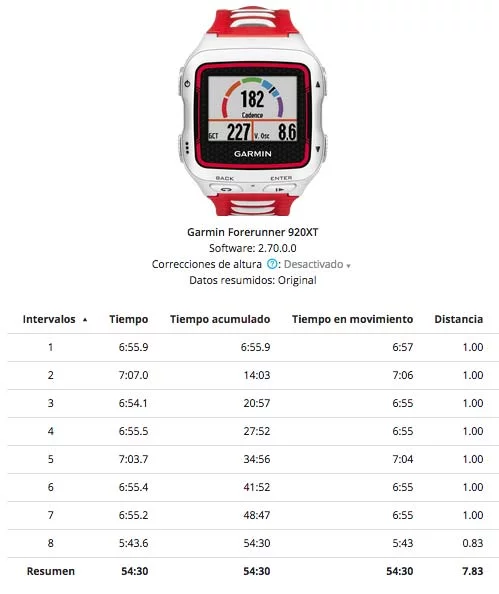
A ese respecto, por el momento no he encontrado ningún reloj que iguale los registros del Garmin 620, tan certero en su medición (incluso en los cambios de ritmo, más rápido que el GPS) que da incluso hasta miedo. Te hace plantear si en ese reloj no será mejor correr con el GPS desactivado, confiando los datos exclusivamente al acelerómetro interno.
Eso si, no debéis olvidar que el reloj tomará datos del acelerómetro, y la cadencia la obtiene de los movimientos del mismo en primer lugar y, si llevamos el sensor HRM-Run, como «servicio de apoyo». Así que todo lo que hagamos con la mano se puede ver reflejado en el resultado final. Si te secas el sudor, si miras el móvil, si bebes agua… todos esos movimientos pueden confundir a la medición.
Al final son datos aproximados, y como tal hemos de tomarlos. Normalmente un corredor experimentado es capaz de saber a qué ritmo está corriendo sin necesitar ningún GPS, simplemente por sensaciones, y el reloj es una mera confirmación. Pero si os digo la verdad, confío bastante más en los datos ofrecidos por el reloj, que en los que pueden dar las cintas de correr en cualquier gimnasio, que con el paso de los años digamos que su calibración suele fallar «un poco».
No sólo puedes entrenar la carrera en interior con GPS desactivado, también podrás entrenar con tu bicicleta cuando no tengas tiempo para salir o simplemente cuando en invierno el tiempo no acompañe.
Podrás conectar con rodillos de entrenamiento eléctricos (como los Wahoo Kickr o Tacx Bushido), o rodillos tradicionales y utilizar un sensor de velocidad/cadencia conectado por ANT+. De estas dos formas obtendrás datos muy fiables de forma constante.
Entrenamientos avanzados
Una de las grandes bazas de Garmin como plataforma es la programación de entrenamientos. De entre todos los fabricantes, son los que han conseguido el sistema más completo y a la vez más sencillo. La preparación es muy rápida, y una vez completada simplemente deberás sincronizar el entrenamiento con el reloj para realizarlo bajo las indicaciones del reloj.
Crear el entrenamiento es verdaderamente fácil. Poner nombre, seleccionar dónde harás el entrenamiento (carrera, ciclismo u otro) y comenzar a añadir pasos.
Por ejemplo, mi último entrenamiento de fartlek, en el que después de hacer un calentamiento de 1km hago diez repeticiones de 400m/400m.
Una vez completada la programación, simplemente debes pinchar en «Enviar a dispositivo» y proceder a sincronizar el reloj. Tienes una segunda opción, que es añadirlo al calendario y tener la programación de entrenamientos según el día. Después podrás encontrar en el reloj la sesión de entrenamiento que te toca cada día.
En caso de no añadirlo a una fecha, encontrarás la sesión creada en la sección de entrenamientos.
A la hora de realizar el entrenamiento programado, el reloj te irá avisando en cada fase de qué es lo que tienes que realizar. Además de marcarte cuánto queda para terminar la fase actual del entrenamiento (en tiempo o distancia, según hayas elegido), junto con ritmo y tiempo de vuelta.
Al terminar de calentar, pasarías a realizar la parte de trabajo y te irá indicando, de igual manera, cada uno de los pasos del entrenamiento con tu objetivo y, en este caso, en qué número de repetición te encuentras. Y así hasta que terminas de entrenar, siempre estarás guiado.
Ésta no es la única forma de entrenar. También podrás competir contra ti mismo en una actividad realizada anteriormente.
O programar un entrenamiento de intervalos directamente desde el reloj, pero de una forma muy sencilla (sin establecer objetivos de ritmo o pulsaciones).
O establecer un objetivo simple, como distancia (hoy salgo a correr 15km), distancia y tiempo (hoy salgo a correr 10km en menos de 45 minutos) o distancia y ritmo (hoy salgo a correr 15km a 4:00 min/km, que he desayunado fuerte).
Entrenamientos Garmin Connect
Y si todas estas opciones de entrenar te parecen pocas, Garmin Connect también te da acceso a una serie de entrenamientos para multitud de carreras. Desde planes para correr carreras de 5 kilómetros hasta para maratón, divididos por semanas.
Pinchando sobre cualquier plan tendrás acceso a los entrenamientos que tiene programados según objetivo, y que podrás programar directamente al reloj, bien por la fecha que quieres empezarlos, o bien por la fecha en la que será la carrera. Si eliges la segunda opción, te dirá cuándo será tu primer día de entrenamiento. Esto quedará sincronizado en el reloj, y podrás ir accediendo a cada entrenamiento de forma diaria, quedando correctamente estructurados para irte marcando todo paso a paso, como si fuera tu entrenador personal.
VO2Max, control de recuperación y pronóstico de carrera
Como otros relojes de gama alta de Garmin, el 920xt ofrece varias funciones de medición de tu rendimiento como atleta, así como una guía de recuperación después de tus entrenamientos.
El VO2Max ya lo hemos podido ver en otros relojes de la marca, no es un campo nuevo para Garmin. Los datos se actualizarán después de cada entrenamiento, por lo que es posible que veas ligeros cambios en diferentes días, aunque es necesario un periodo inicial para alcanzar un dato fiable. A mi generalmente me varía la medición entre 48 y 51. Eso sí, para que el dato sea fiable el sensor de pulso debe ser de pecho, pues el algoritmo que lo calcula se basa en la variabilidad de pulso, algo que los sensores ópticos no son capaces de leer de forma fiable.
A través de esta medición, el reloj podrá ofrecerte un pronóstico de tiempos de finalización de carrera para diferentes pruebas, que van desde 5 kilómetros hasta una maratón. No quiere decir que debas alcanzar esos tiempos, sino que es un indicador de hasta dónde podrías llegar con tu condición física actual. O mejor dicho, hasta dónde llegan los atletas de tu mismo sexo, edad y condiciones físicas.
Lo que sí es novedoso es que ahora el VO2Max también se mostrará para ciclismo. Para ello, además del sensor de pulso también necesitamos un medidor de potencia montado en nuestra bicicleta. Al igual que en el caso de la carrera, estos datos se irán actualizado (y estabilizando) con el paso del tiempo.
El Garmin 920xt también cuenta con un control de recuperación. En primer lugar, cuando terminas un entrenamiento de carrera, te indicará cuánto tiempo estima que debes descansar hasta tu próximo entrenamiento fuerte (a ritmos altos para ti, no un trote cochinero para no perder el autobús).
Pero si eres triatleta (o haces otro tipo de entrenamientos además de correr) tampoco tomes los datos como seguros, pues el tiempo de recuperación sólo toma en cuenta tus entrenamientos de carrera, así que si el siguiente entrenamiento incluye 100km en bici a un ritmo intenso, eso no modificará el tiempo de recuperación restante.
Cuando empiezas un nuevo entrenamiento, aproximadamente a los 7 minutos, el Garmin 920xt te mostrará un mensaje que te indicará cómo te has recuperado desde tu anterior entrenamiento. Mensajes como «Óptimo», «Bien», «Moderado», en ningún momento te mandará a casa por tu pésimo estado de forma.
Alertas
Es posible crear una serie de alertas para que el Garmin 920xt nos avise de diferentes eventos. Lo hará de la forma clásica, por sonido/vibración/notificación en pantalla. Las alertas serán las típicas de Garmin, es decir:
- Frecuencia cardíaca
- Correr/caminar
- Ritmo
- Tiempo
- Distancia
- Cadencia
- Calorías
Y serán independientes de cada tipo de actividad. Por lo tanto puedes establecer una alerta para frecuencia cardíaca mientras corres, y una alerta de velocidad para bicicleta. Todas las alertas son compatibles con todos los perfiles deportivos, excepto correr/caminar que sólo podrás configurarlo para actividades de carrera.
Algo que es nuevo en el Garmin Forerunner 920xt son las alertas personalizables. Puedes crear la alerta que tu desees para el evento que te interese, a través de la opción de «Personalizar».
A continuación debes seleccionar el tipo de mensaje que recibirás y cómo quieres identificarla. Por defecto lo puedes crear como «Comer», «Beber», «Dar la vuelta» o «Ir a casa», pero también puedes personalizar el mensaje.
La alerta personalizada se activará cuando tu quieras, en función de tiempo o distancia. Por tanto puedes programarte una alerta para acordarte de beber cada cinco kilómetros, o de comer cada hora.
Otra opción interesante que encontrarás en el Garmin Forerunner 920xt es el metrónomo. En este caso, exclusivo para los perfiles de carrera. Activando esta opción el reloj emitirá un pitido y/o vibración en la frecuencia que tu le indiques, para poder hacer ejercicios de cadencia de carrera.

En las configuraciones que puedes seleccionar, por supuesto la cadencia (en pulsaciones por minuto), y la frecuencia de las alertas, que serán cada 2, 3, 4 o 6 pasos. Por lo tanto tendrás que hacer coincidir el paso con el sonido o vibración.
Sensores integrados y accesorios externos
En el 920xt tienes brújula magnética que te ayudará a la hora de orientarte durante la navegación, así como un altímetro barométrico que será capaz de indicarte los cambios de altitud.
En el caso de la brújula no tendrás ningún problema con su uso, el caso del altímetro si deberás conocer cómo es su funcionamiento para que sepas «lo que hay».
El Garmin 920xt tiene un altímetro barométrico que obtiene la altitud a partir de la presión atmosférica, ya que esta desciende a medida que ganamos altura. Pero debemos saber que la presión atmosférica no es algo estable, sino que varía según el clima, así que un día de clima soleado la presión será más alta que un día lluvioso, donde la presión atmosférica baja.
Esto significa que la altitud que tendremos en el reloj no tendrá una gran exactitud, pero los cambios de altitud subiendo y bajando si tendrán una precisión correcta. Esto es especialmente notorio cuando te encuentras a nivel del mar (como es mi caso). Hay días en los que tu entrenamiento, prácticamente llano, tendrá un perfil de altitud muy correcto y del que probablemente no tengas dudas.
Y otros días en los que sabes que no has salido con el equipo de submarinismo, por lo que es evidente que el 90% de tu entrenamiento no se ha desarrollado debajo del agua.
La ruta es la misma, y el perfil muy similar. La diferencia la marca en que el día del primer entrenamiento era un día soleado, mientras que en el segundo era un día muy nuboso y con lluvia. Así que hay una variación en la altitud marcada de aproximadamente 3 o 4 metros, pero lo importante es que los datos de ascenso y descenso acumulados sí serán bastante precisos. Y salvo que tengas pensado hacer vuelo rasante (algunos lo hacéis con vuestros ritmos sub 3min/km), no creo que esos problemas de medición de altitud puedan afectarte.
Esos son los dos sensores que integra el reloj, pero gracias a la conexión ANT+ es posible conectar (casi) cualquier sensor externo, de muchos tipos y de diferentes marcas. Ese casi es debido a que el 920xt no es compatible con básculas con conexión ANT+ (que terminarán siendo sustituidas por básculas WiFi en su inmensa mayoría), el accesorio de medición de temperatura de Garmin (Garmin Tempe), o máquinas de fitness que dispongan de conexión ANT+. Pero no todo está perdido, porque gracias a Connect IQ siempre es posible que se puedan añadir otro tipo de sensores externos más adelante, como por ejemplo el medidor de lactato no invasivo de BSX Insight.
Aparte de esos casos, todo lo demás podrás conectarlo sin ningún problema:
- Sensores de frecuencia cardíaca
- Sensores de velocidad y/o cadencia (ciclismo)
- Sensores de potencia (ciclismo)
- Podómetro (carrera)
- Cámara Garmin VIRB para control remoto
Los sensores no se limitan a uno por tipo, sino que puedes tener varios sensores del mismo tipo sincronizados. Así, puedes tener varias bicicletas, cada una con un sensor instalado, y no será necesario realizar una búsqueda cada vez que cambies de una a otra. O un sensor de pulso óptico y el HRM-Run, pudiendo usar uno u otro según más te convenga.
A pesar de contar con conectividad Bluetooth, no es posible conectar sensores que usen esta tecnología. Pero no tienes de qué preocuparte, la mayor parte de sensores de terceros están saliendo al mercado con doble conectividad Bluetooth/ANT+.
Monitor de actividad
Otra de las novedades del Garmin 920xt, comparándolo con el 910xt al que sustituyó, es el tener un monitor de actividad que medirá tus movimientos en el día a día. Por tanto, el Forerunner 920xt no sólo llevará el registro completo de tus entrenamientos, sino que además también estará pendiente de tu actividad antes y después de entrenar. No es algo exclusivo del 920xt, sino que es lo que estamos viendo en la mayor parte de relojes, tanto de Garmin como de otras marcas.
Este registro lo lleva a cabo gracias al acelerómetro interno del reloj. El mismo que mientras estás corriendo te facilita los datos de cadencia. En este caso lo que hará será contar los pasos que des a lo largo del día y gracias a un algoritmo lo traducirá también a distancia recorrida. Cabe decir que te contará los pasos dados tanto entrenando como cuando no lo hagas, así que las distancias (aproximadas) que te facilite serán las totales.
En la pantalla principal del reloj tienes una información rápida, con el número de pasos dados en la parte inferior a la izquierda.
Y si presionas una vez el botón de desplazar hacia abajo, entrarás en la pantalla donde verás tu actividad al completo. Una semicircunferencia que representa cómo estás con respecto al objetivo y la situación del día en cuanto a porcentaje junto al objetivo de pasos del día. Por defecto el objetivo de pasos es dinámico (se ajusta automáticamente a tu actividad habitual), pero si quieres puedes modificarlo de forma manual.
Otra función que tiene es el aviso de inactividad. Está pensado para que el reloj te avise cuando lleves mucho tiempo sin moverte (por ejemplo, si estás sentado en tu mesa de la oficina), y te pongas en movimiento. A mi personalmente la función no me ha funcionado bien, pues me terminaba avisando de que debía moverme precisamente cuando estaba de pie y moviéndome. En la pantalla queda representado por una línea en la parte inferior.
Por la noche, cuando estés durmiendo, también medirá tu actividad. O más bien, inactividad. Como la inmensa mayoría de monitores de actividad registrará la calidad de tu sueño, si es ligero o profundo, a partir de los movimientos que hagas. El reloj interpreta que si no te mueves es porque estás en un momento de sueño profundo, lo contrario que si te mueves bastante. Pero este modo no es automático como si podemos ver en muchos otros relojes y pulseras, sino que hay que activarlo cuando vayamos a dormir, y desactivarlo al despertar.
Todos estos datos se sincronizarán con Garmin Connect, donde podremos analizar en las diferentes pantallas tanto nuestra actividad diaria como el sueño. Se encuentra en la sección «pasos». Cada día podrás comprobar tu actividad separada por horas, totales y medallas conseguidas.
En la pestaña «Desglose» tendrás una visión rápida de cuál ha sido la actividad diaria.
«Actividades» indica la actividad total diaria, desglosando los entrenamientos. Así podrás comprobar tu actividad tanto entrenando como cuando no lo estás haciendo. En este caso, separa mi sesión de fartlek de ese día del resto de pasos diarios recorridos.
Si esa noche mantienes el reloj en la muñeca y lo pones en modo sueño (sólo para aquellos a los que no les resulte incómodo, es voluminoso) obtendrás el detalle de cómo ha sido la actividad durante el sueño.
Recepción de satélites
El Garmin 920xt no es sólo un reloj GPS, también tiene la posibilidad de recibir la localización a través de la red de satélites rusos, llamada GLONASS.
Durante el tiempo que lo he estado usando no he notado ningún problema con la recepción. Siempre ha sido rápido en obtener señal y a la hora de marcar distancias en mis circuitos habituales (en los que ya me conozco perfectamente las distancias, seguro que a vosotros os pasa) nunca ha fallado. Además, probándolo junto con otros relojes en el mismo recorrido -como suelo hacer todas las pruebas- los resultados obtenidos han sido satisfactorios.
Donde más pegas se suele presentar es a la hora de mostrar el track en un mapa, con incoherencias como decirte que has corrido por el agua cuando no eres un pato, o hacerte saltar entre edificios como a Spiderman.
Esta imagen es un ejemplo muy claro de track confuso, obtenido en un enfrentamiento con un Garmin Fenix 2 (que no tiene GLONASS). Problemas de recepción tanto en las zonas con árboles o de recepción algo más complicada, como en zonas sin ningún tipo de problemas.
Este tipo de problemas no los he tenido con el 920xt, al menos de forma tan continua como pueden ocurrir con el Fenix 2. Que no es que no ocurran, por supuesto que lo harán, pues con la precisión de los GPS de consumo de hoy en día el dato de posicionamiento más preciso será en un rango de 3/5 metros (distancia más que suficiente para llevarte por tu camino, o por los tejados del edificio).
El Garmin 920xt siempre me ha mostrado unos tracks muy consistentes, y en caminos de ida y vuelta ha trazado en el plano por el mismo lugar, siempre con gran precisión, aunque por supuesto nunca un track perfecto (que repito, no encontrarás en un aparato de este tipo).
Incluso actividades más complicadas donde estás corriendo continuamente en un espacio reducido, como un partido de fútbol 7, donde cubres tu demarcación y salvo contadas ocasiones no pisarás otras zonas (en mi caso, lateral derecho).
Siempre hay que ser prácticos y no preocuparse tanto por el track marcado, como por las distancias totales, que en la mayor parte de las ocasiones no darán un error superior a un 2%.
Autonomía
El Garmin 920xt es un reloj pensado para competiciones de triatlón. Y por supuesto esto incluye desde un triatlón super sprint que puedes terminar en unos 40 minutos y donde la batería de cualquier reloj no será un impedimento, hasta hacer un Ironman, donde puedes llegar a tardar hasta 17h. El reloj está destinado a atletas que cubran tanto esas disciplinas, como cualquiera de las distancias que hay entremedias, así que la batería del reloj tiene que estar a la altura.
Garmin ha dotado al 920xt de una batería capaz de aguantar hasta 24 horas con el GPS activado, más que suficiente para cualquier competición a la que te quieras enfrentar. Si activamos también la recepción de satélites GLONASS, la autonomía se verá afectada. Por supuesto todo depende las condiciones climatológicas y del entorno.
Si esta duración se te quedara corta, Garmin ha introducido el modo UltraTrac en el reloj, que ya hemos visto en otros relojes de la marca, como el Fenix 2. Activando este modo el 920xt sería capaz de aguantar hasta 40 horas, ya que reduce el número de veces que actualiza datos de satélite (que normalmente es cada segundo). Este modo en realidad sólo resulta práctico para deportes en los que el movimiento no sea rápido y no necesites una alta precisión constantemente, como expediciones de montaña o escalada.
Yo he realizado una prueba de autonomía, cargando la batería hasta el 100%, comenzando una actividad y dejando el reloj sin tocar nada, hasta esperar que agotase la batería. El GLONASS estaba activado y la grabación de datos cada segundo. Es decir, la configuración más exigente. El resultado ha sido el siguiente:
No ha llegado hasta las 15 horas de duración, lejos de las 24 horas que Garmin promete. Así que si necesitas una duración extendida de batería, recuerda desactivar la función de localización de satélites GLONASS. Perderás algo de precisión a cambio de ganar autonomía. Pero para entrenamientos y competiciones normales, como ves tienes batería más que de sobra.
Iluminación
Dentro de las opciones que buscamos los que no tenemos más remedio que entrenar de noche (y en mi caso supone incluso entrenar de madrugada) es contar con una buena iluminación de pantalla. No sólo en cuanto a calidad, sino en cuanto a configuración.
El Garmin 920xt no defrauda en ese sentido, pues permite seleccionar cuándo se iluminará la pantalla y durante cuánto tiempo. Permite dos modos, iluminación automática al presionar un botón o al recibir una alerta, y configurar el tiempo que permanecerá encendido que va desde los 8 segundos hasta 1 minuto, dando también opción a dejar la pantalla encendida. En mi caso, siempre opto por la iluminación en modo manual (al presionar el botón para tal fin, el de encendido) y que permanezca encendido durante todo el entrenamiento.
No es posible regular la intensidad de la luz de fondo, como por ejemplo sí se podía hacer en el Garmin Fenix 2, pero en ningún momento tendrás problemas para ver la pantalla porque la iluminación ofrecida es intensa y equilibrada en toda la pantalla.
Garmin 920xt, el reloj de diario
Además de usar el Garmin 920xt para entrenar, también podrás usarlo a diario. Tal vez tenga una estética demasiado deportiva y no sea compatible con un traje, pero a diferencia del Forerunner 910xt, en este caso si tenemos reloj. Gracias a Connect IQ es posible cambiar la pantalla de la hora a otra que descargues al reloj.
Como reloj el funcionamiento es perfecto, añadiendo además otras funcionalidades para el día a día como las de monitorizar tu actividad o recibir notificaciones de tu teléfono móvil.
El reloj permite configurar una alarma, pero es sencilla y no podrás seleccionar repetición ni qué días de la semana
Garmin 920xt, el smartwatch
El FR920xt ofrece la posibilidad de mostrar las notificaciones de tu teléfono móvil en la pantalla del reloj. Así que podrás leer mensajes o correos de tu teléfono sin tener que sacarlo del bolsillo. Por el momento esta función es compatible con Android y iOS, aunque en Android con ciertos problemas.
El reloj se nutre de las notificaciones generales del teléfono, por lo que no hay que configurar nada especial ni instalar una aplicación.
Estas notificaciones las recibirás tanto en modo reloj, como cuando estés entrenando. Así que si sales a realizar tu entrenamiento no hay motivo para no estar al día de todas las notificaciones de tu Twitter.
El problema que hay con Android es que el Bluetooth tiene un funcionamiento errático. Con iOS la sincronización entre la aplicación Garmin Connect y el reloj es fácil y rápida (hay que sincronizar el reloj a través de la aplicación, no desde el menú de configuración), y el funcionamiento es constante y sin más problemas que la desconexión en algún momento puntual, pero se volverá a conectar sin mayor problema.
En el caso de Android me he encontrado con problemas a la hora de sincronizar el reloj por primera vez. En más de una ocasión he necesitado tres o cuatro intentos para conseguir que permanecieran sincronizados. Pero lo más molesto es que la conexión no queda guardada. Cada vez que el reloj y el teléfono pierden la conexión, porque apagues el teléfono, o simplemente dejes el teléfono en un sitio y te alejes más de 10m. Al volver, el teléfono te preguntará si quieres volver a conectar con el reloj, porque lo identifica como un nuevo dispositivo, no como el que ya estaba conectado.
Es una situación muy extraña y que realmente no entiendo el motivo de por qué no funciona correctamente, cuando en el Garmin Fenix 2 funciona perfectamente.
Connect IQ
Connect IQ se ha hecho oficial en el Garmin 920xt a partir de la versión de firmware 2.70. Anteriormente estaba presente en forma de beta a la espera de lanzamiento oficial. Este es el nuevo camino que ha tomado Garmin para defenderse de la oleada de smartwatch que está llegando al mercado. Descrito de una forma rápida, Connect IQ permitirá tanto a Garmin como a desarrolladores externos el crear «apps» que podremos instalar en nuestros relojes. Estas aplicaciones podrán ser para entrenar o para usar el reloj como smartwatch. Tenemos cuatro tipos de «apps»:
- Aplicaciones: Aplicaciones completas, más avanzado que la simple creación de alguna pantalla adicional. Aquí podremos ver cómo empresas como BSX Insight pueden crear una aplicación de entrenamiento y hacer uso de su medidor de lactato no invasivo. O aplicaciones de navegación específicas para montaña.
- Widgets: Facilitar información obtenida de otras fuentes. Un widget del estado bursátil que recibiese información desde el teléfono sería un buen ejemplo, o la situación actual del tiempo.
- Campos personalizados: Campos de datos que puedes añadir a las pantallas que tengas configuradas. Yo ahora mismo tengo uno instalado que estima el tiempo de finalización para una carrera de media maratón. O un contador de cervezas consumidas, para que sepas cuánto debes correr para hacer sitio a las 3 cervezas que te vas a tomar post-entrenamiento con tus compañeros.
- Esferas de reloj: Nuevas pantallas para mostrar la hora, analógicas o digitales.
Estas aplicaciones se podrán instalar desde Garmin Connect en el ordenador o desde el teléfono. Tras seleccionar lo que quieres instalar, aparecerán en el reloj después de la siguiente sincronización. El funcionamiento será similar al de cualquier tienda de aplicaciones de un teléfono móvil. Si quieres tener más información acerca de Connect IQ, he preparado una entrada específica donde te lo explico. Pincha aquí para leerlo.
Conectividad
El Garmin 920xt ofrece formas muy distintas de conectarse con otros dispositivos. Por supuesto, y como punto más importante, con infinidad de sensores ANT+ para complementar los datos de nuestros entrenamientos. Ya sea sensores de pulso, de cadencia, de cadencia/velocidad para bicicleta y por supuesto sensores de potencia para bicicleta. Y además tendrá memoria para varios, por lo que puedes memorizar diferentes sensores que tengas instalados en dos bicicletas distintas sin tener que hacer una nueva búsqueda cada vez que pases de una a otra. Y será compatible con cualquier sensor con conectividad ANT+, sean de Garmin o de cualquier otra marca.
A pesar de que el reloj dispone de Bluetooth, no podrás conectar sensores externos basados en esta tecnología, que queda reservada exclusivamente para sincronización con tu teléfono y para las funciones de LiveTrack.
La sincronización de datos puede ser por cable USB, pero la manera más sencilla será a través de WiFi al terminar tu entrenamiento, de forma automática. Cuando finalizas una actividad, el reloj buscará la red WiFi que tu previamente has configurado desde Garmin Express. La configuración es muy sencilla, simplemente buscas la red cercana o bien introduces los datos de forma manual, y quedarán grabados en el reloj.
En caso de que no llegues a casa inmediatamente después de tu entrenamiento, puedes realizar una conexión manual si mantienes presionado el botón de Modo y seleccionas la opción de «Conectar a Wi-Fi»
LiveTrack
Livetrack no es una novedad del Garmin 920xt. Primero llegó a las unidades de ciclismo, y después Garmin lo incorporó en los 220, 620 y Fenix 2. Lo que te permite es compartir tus entrenamientos y carreras a través de Internet con amigos y seguidores.
Esta función necesita del apoyo del teléfono móvil, ya que el reloj no dispone de conectividad por si mismo. Para ello debes tener un teléfono con conectividad Bluetooth Smart. La actividad se iniciará desde la aplicación del propio teléfono, en el que entrarás en la opción de LiveTrack y seleccionarás cómo quieres compartir la actividad (por Facebook, Twitter o correo).
En el caso de elegir compartir por correo, este es el mensaje que recibirás. Así que también puedes compartir el enlace recibido de cualquier otra manera (WhatsApp, por ejemplo) simplemente copiando y pegando la dirección.
Así que una vez que estés en la calle, simplemente tienes que comenzar la actividad como harías de forma normal y el 920xt irá enviando los datos al servidor de Garmin a través del teléfono. Los detalles del entrenamiento se podrán seguir desde un teléfono móvil, donde sólo verás el track y los marcadores de kilómetros.
O desde el ordenador, donde además tendrás acceso a gráficas y datos de ritmos. Y cuando hayas completado el entrenamiento, la propia página avisará a nuestros seguidores de que todo está acabado y ya no hay nada más que ver.
Garmin Connect
Una vez que hayas terminado la actividad, y tras sincronizar el reloj de alguna de las formas ofrecidas (por cable, por Bluetooth con el teléfono o directamente por WiFi), se quedará sincronizado con Garmin Connect, la aplicación web donde quedarán registradas todas tus actividades. También puedes descargar el archivo FIT directamente desde el reloj (o desde la web una vez sincronizado) y subirlo a tu plataforma de seguimiento de entrenamientos de tu elección.
Cuando entras en Garmin Connect, ésta es la primera pantalla que podrás encontrar. Es el panel de control, que puedes personalizar con los widgets que a ti te interesen. Un vistazo rápido a actividades, estado de material, distancias recorridas o medallas conseguidas a través del monitor de actividad.
Pero lo que más te interesa será ver las actividades. Una vez cargada, podrás acceder a estas y tendrás la información completa de todas las gráficas, que podrás comparar entre ellas. Por supuesto tienes los datos generales de la actividad y podrás ver los datos de vueltas automáticas o manuales que hayas ido creando mientras entrenabas.
Garmin Connect es la aplicación web más completa de toda la competencia. Pero recuerda, si tu estás acostumbrado a otra plataforma (o es donde están tus compañeros de entrenamiento y queréis llevar un registro de piques), recuerda que podrás sincronizarlo, incluso de forma automática en el caso de Strava (y próximamente otros como Endomondo).
Mi opinión
El 920xt es un reloj de referencia. En Garmin han sido capaces de conseguir un equipo aún mejor que el 910xt, incorporando prestaciones del resto de la gama y con novedades, como la plataforma Connect IQ, que sin duda representará un antes y un después en los relojes de la marca.
Pero el Garmin 920xt no es un reloj perfecto, y podemos encontrar dos partes claramente diferenciadas. Por un lado tenemos el reloj como equipo de entrenamiento y competición, faceta en la que se trata de un reloj muy fiable (y confiable), que te ofrece todas las características y prestaciones que puedes necesitar de un reloj de esta gama. Incluso gracias a la última actualización de firmware, es una opción bastante seria hasta para los corredores de trail.
En el otro lado tenemos las prestaciones como smartwatch y monitor de actividad, donde todavía necesita mejorar. La sincronización con teléfonos Android es «un castigo» y la función de aviso de inactividad falla bastante, pidiendo que te pongas en movimiento cuando, precisamente, te estás moviendo o llevas moviéndote durante más de 20 minutos. Connect IQ no ha llegado al 100% y todavía no es posible instalar aplicaciones o widgets, y la disponibilidad de pantallas de reloj y de datos es todavía bastante limitada ya que no hay mucha aportación por parte de Garmin o de terceros
No obstante, lo que más me (te) interesa es precisamente la parte en la que entrenas con el reloj. Y se trata de un reloj muy bueno. El resto de prestaciones son accesorias, que por supuesto que pagas por ellas (y deben funcionar como se promete), pero pasan a un segundo plano. Si buscas un reloj para hacer triatlón, o simplemente para correr y practicar el resto de deportes de forma ocasional, no se me ocurre ningún motivo para decirte que el Garmin 920xt no sea el reloj que buscas.
¿Te ha gustado la prueba?
Espero que esta prueba te haya ayudado. Si quieres saber la verdad, son muchas horas las necesarias para realizar cada análisis. Entrenamientos, fotos, escribir el artículo, nuevas fotos… es un proceso largo y exigente.
Si te animas con la compra del dispositivo, puedes hacerlo a través de este enlace directamente en Amazon. De esta manera a ti te costará lo mismo o más barato que el precio oficial, y a mi me retornan una pequeña comisión que ayudará a la compra de nuevos dispositivos para realizar nuevas pruebas.
Si te ha gustado esta review completa y quieres echar una mano, deja tus impresiones en los comentarios. Me servirá para conocer vuestra opinión, por si me he dejado algo sin comentar o crees que debería cambiar algo. Pregunta tus dudas si hay algo que no ha quedado claro. En definitiva no soy más que un atleta como tu que detalla el uso del reloj desde el punto de vista de un nuevo usuario.
Enseña esta entrada a tus amigos y compártela en redes sociales, seguro que si están en búsqueda de reloj de entrenamiento te lo agradecerán.
Comprar Garmin 920xt
Puedes comprar el Garmin 920xt en dos colores (azul/negro o blanco/rojo) y dos variantes (con o sin sensor de pulso). A continuación te facilito enlace con unas muy buenas ofertas. Comprando a través de ellos ayudarás a mantener la página web y mi trabajo.
Además, estos son los precios que puedes encontrar en Amazon en toda su red europea
https://www.amazon.es/dp/B00O44H2OA&tag=c1mes-21
https://www.amazon.es/dp/B00O44MF10&tag=c1mes-21
https://www.amazon.es/dp/B00O43VCVA&tag=c1mes-21
https://www.amazon.es/dp/B00O44914E&tag=c1mes-21

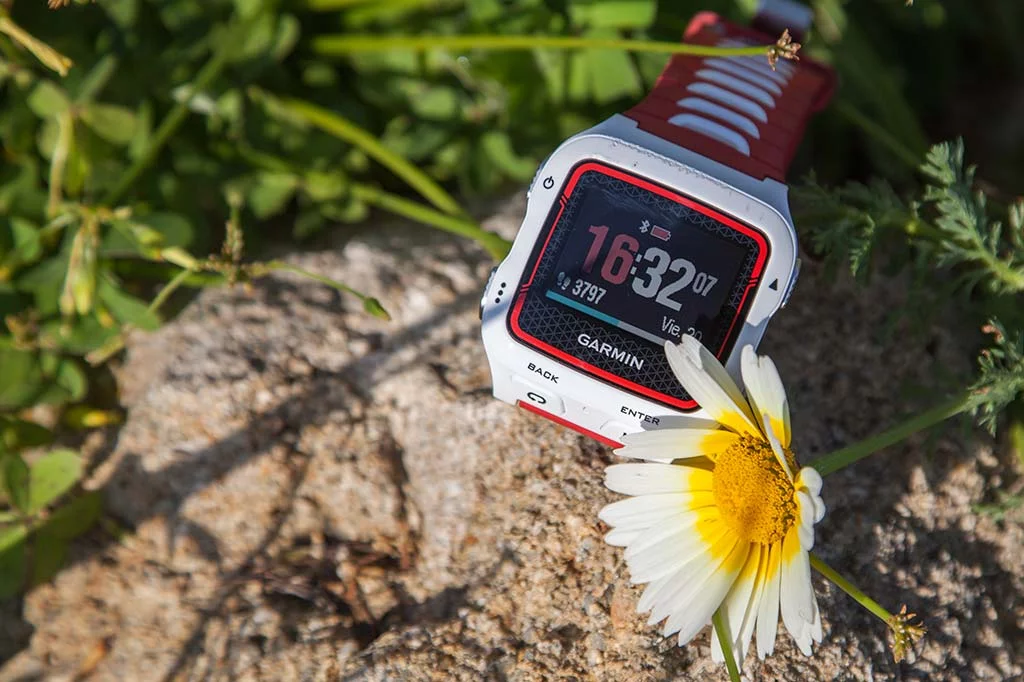
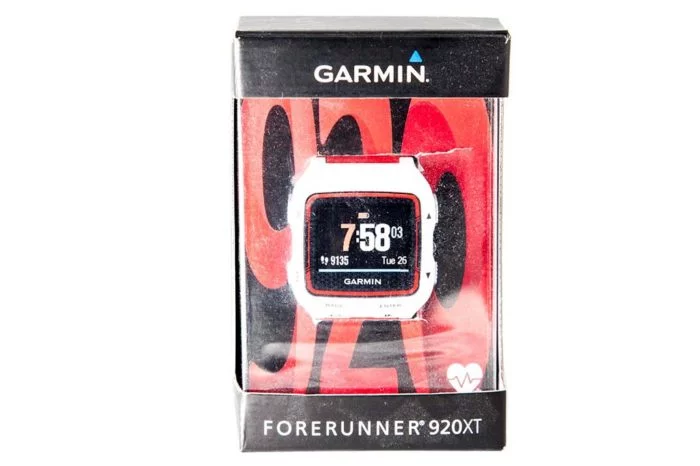
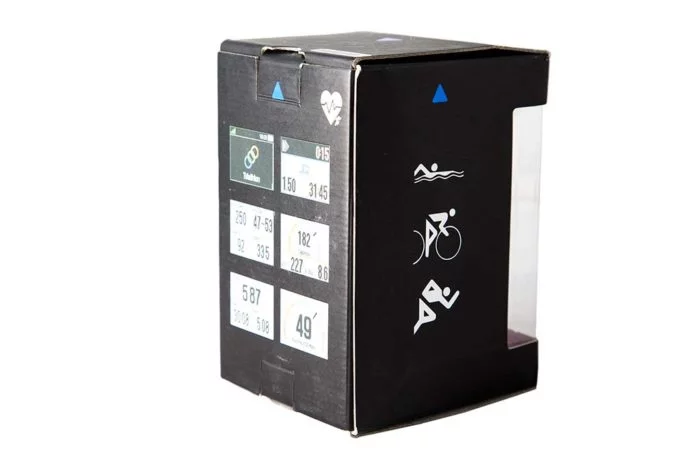
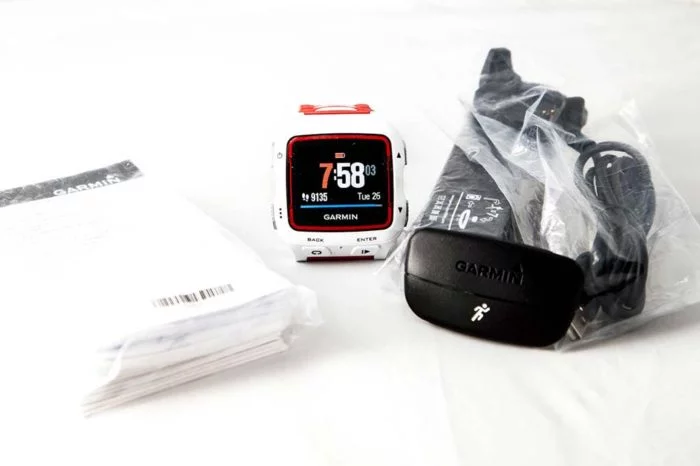
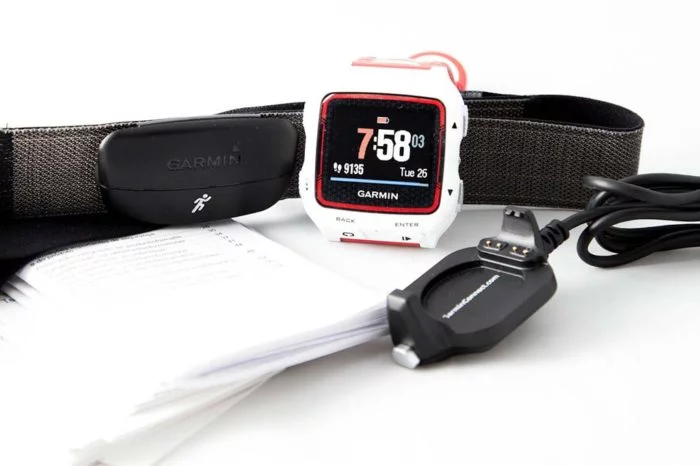
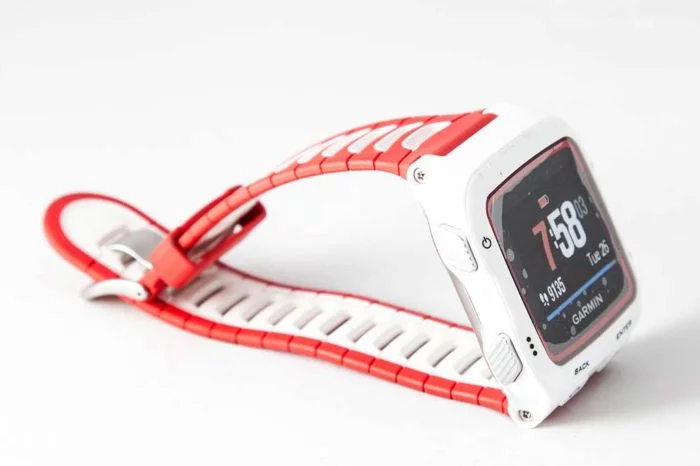
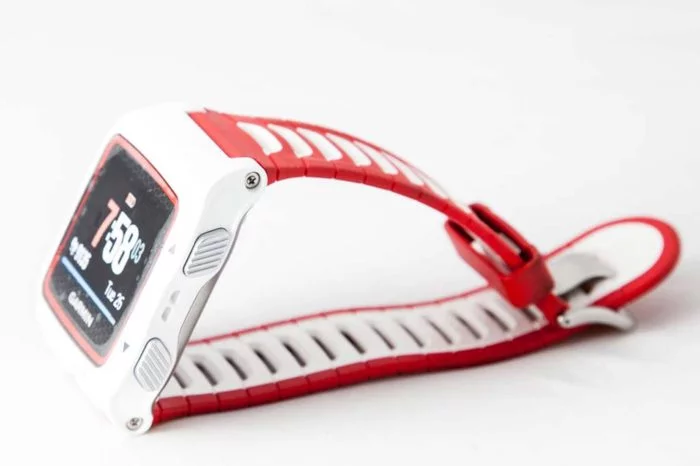

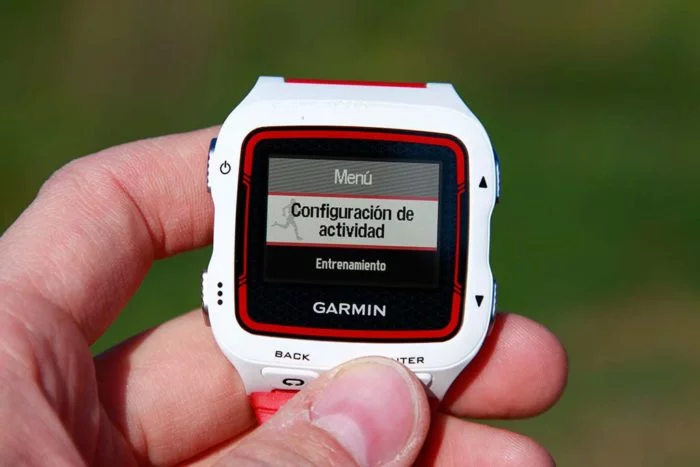
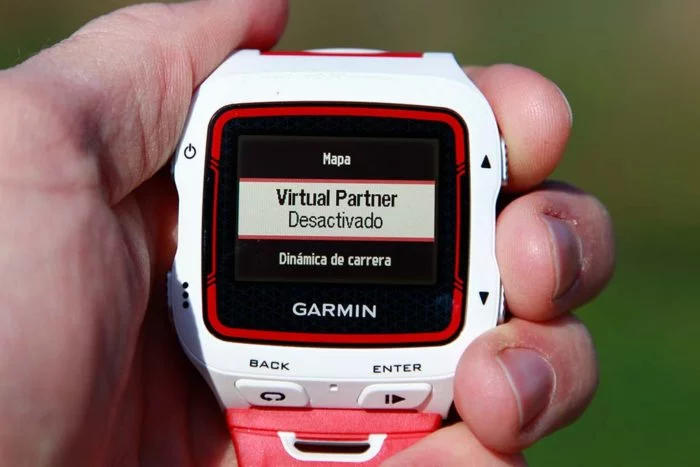
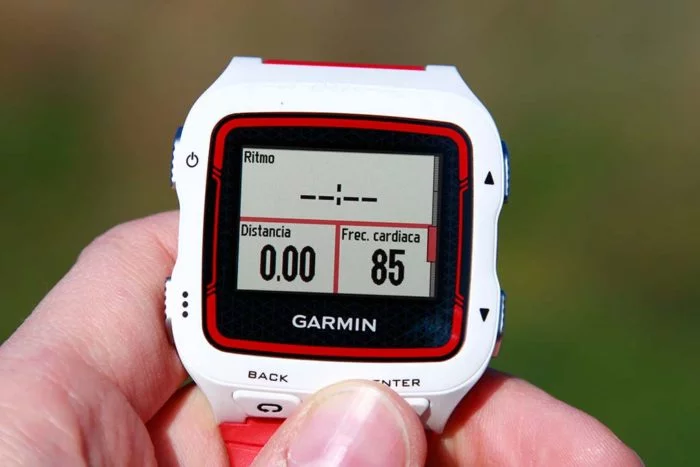
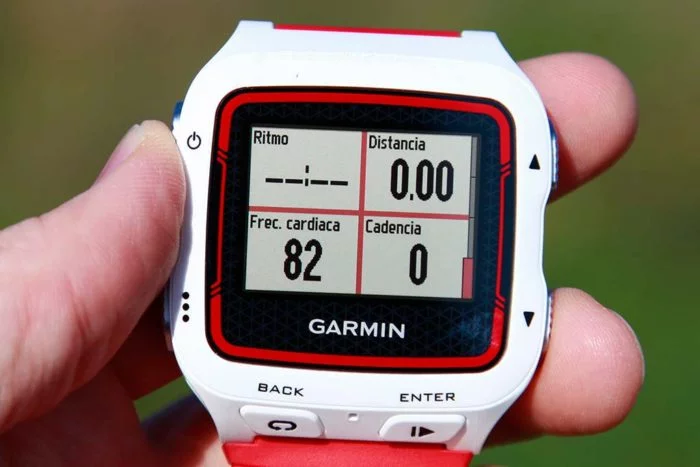
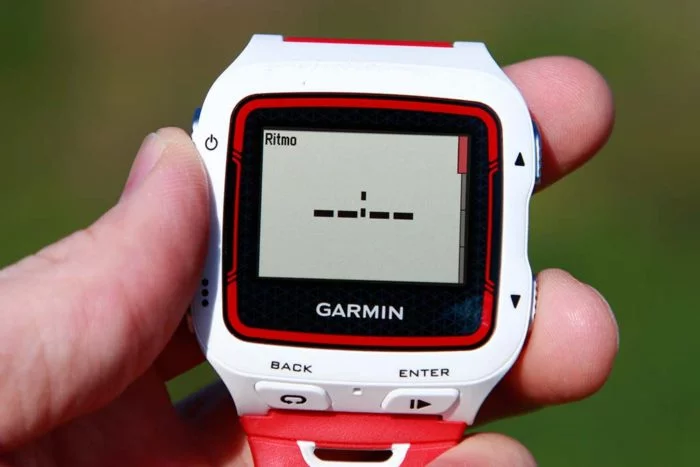
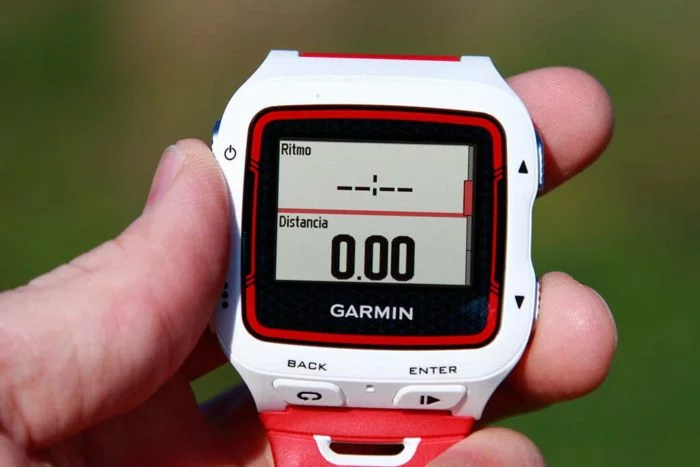
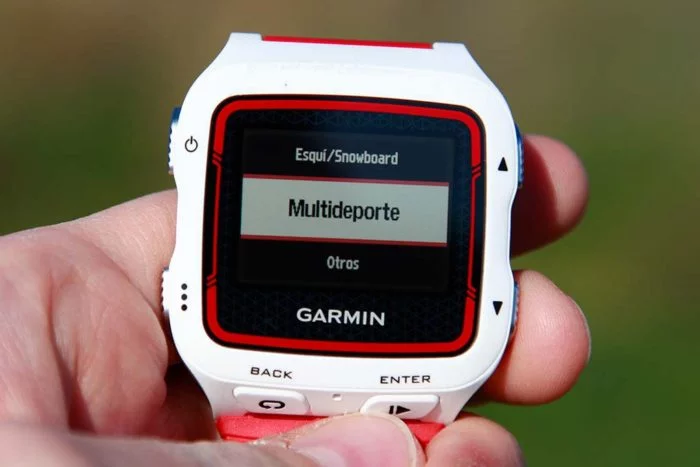
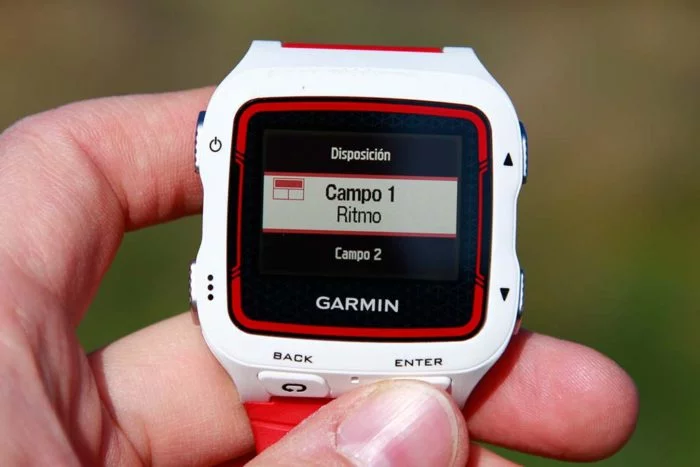
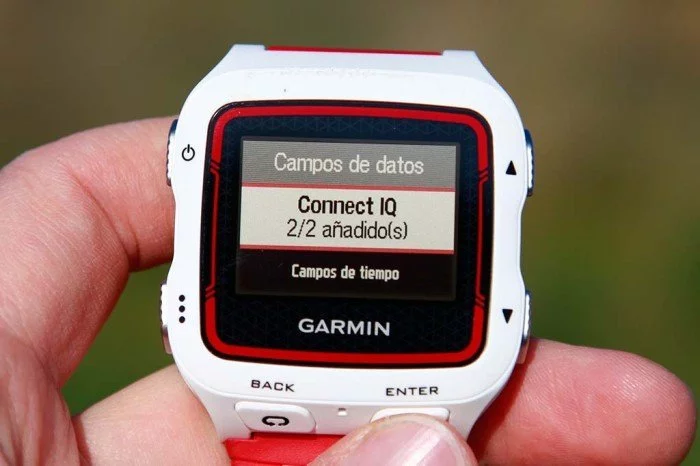
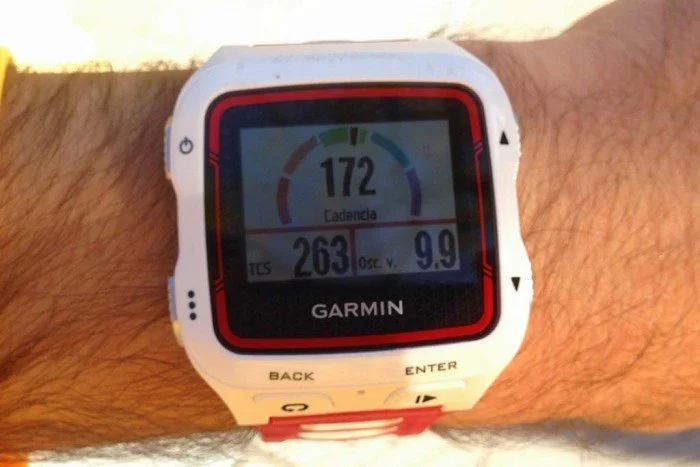
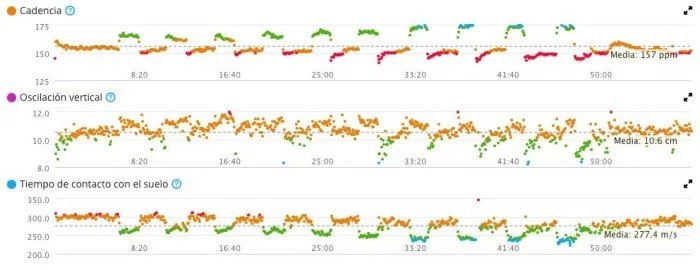
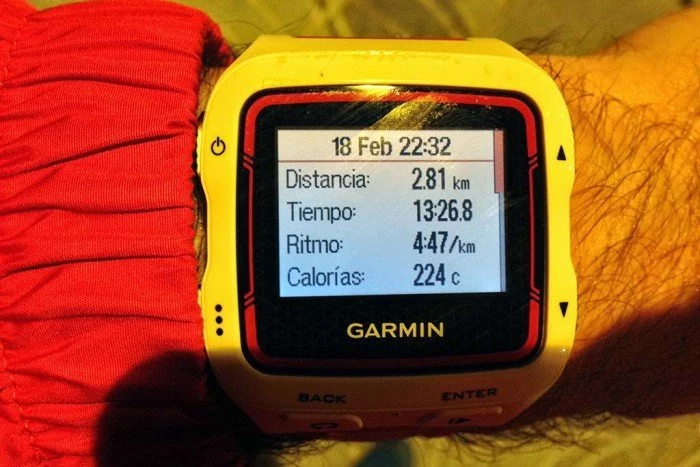
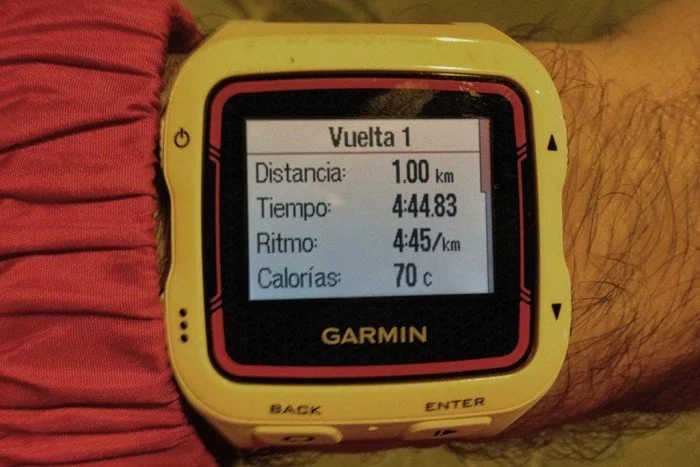
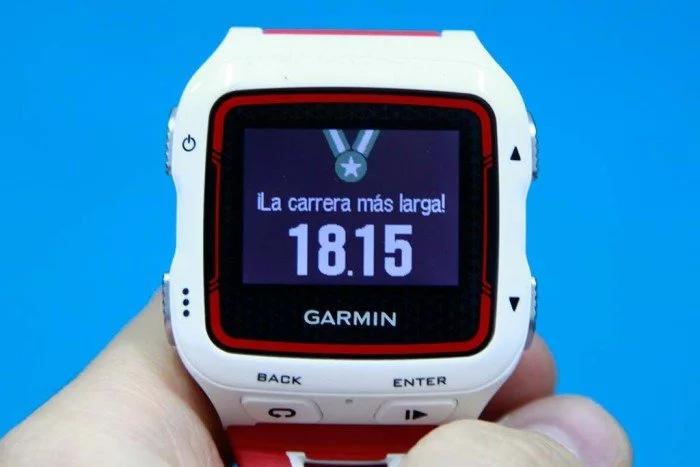
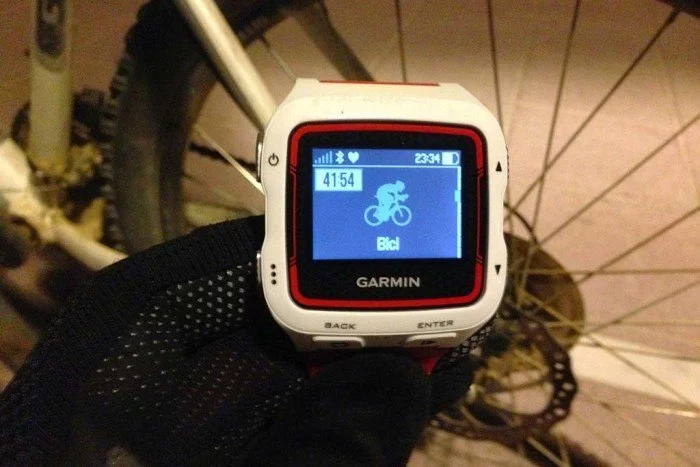
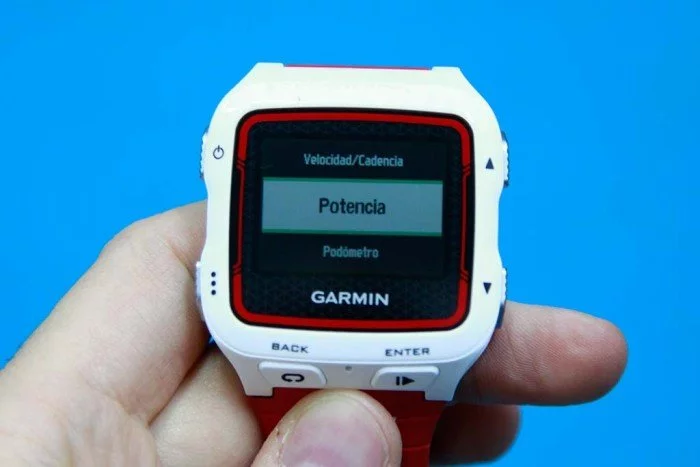
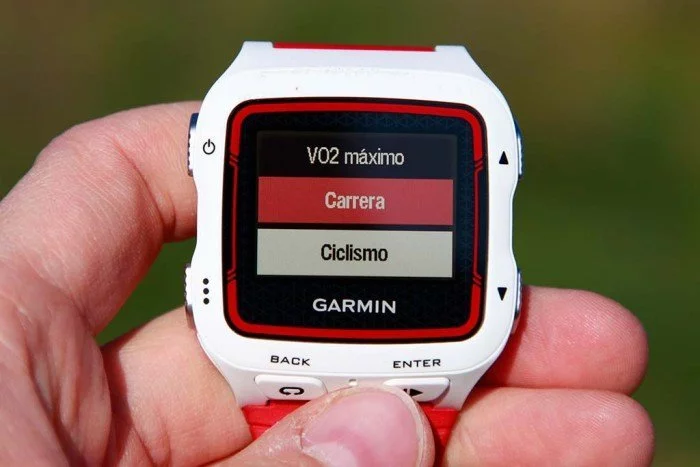
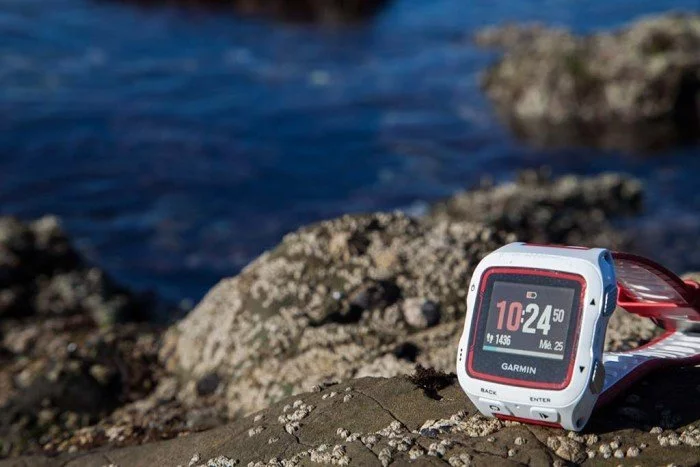
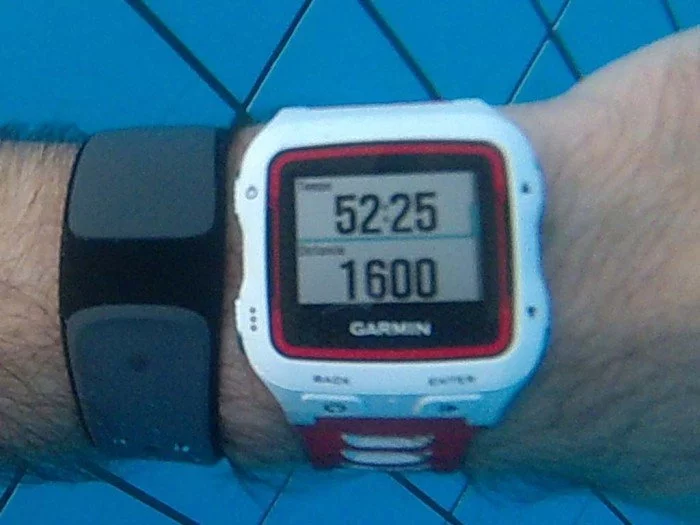
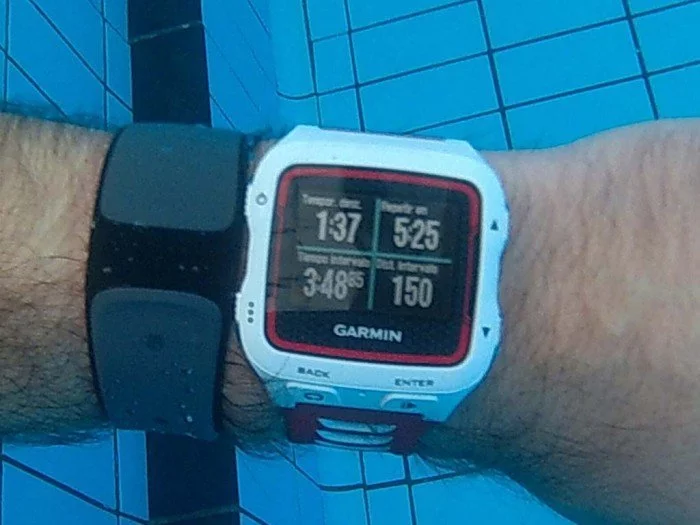
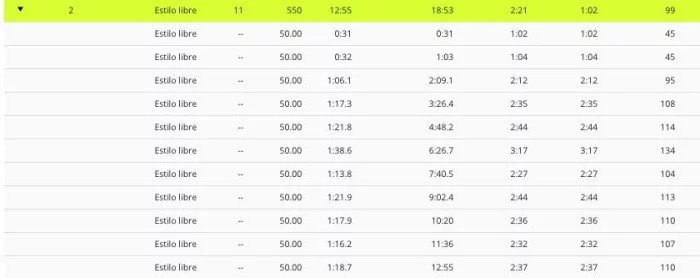
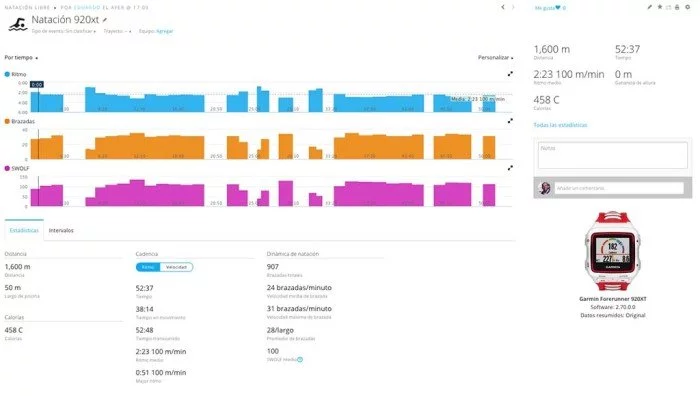
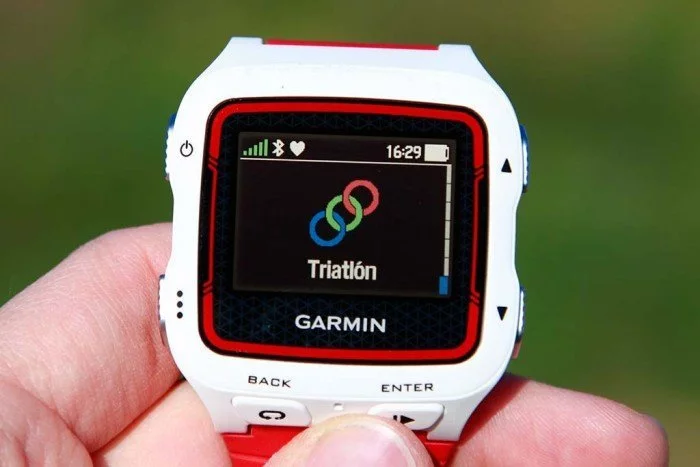
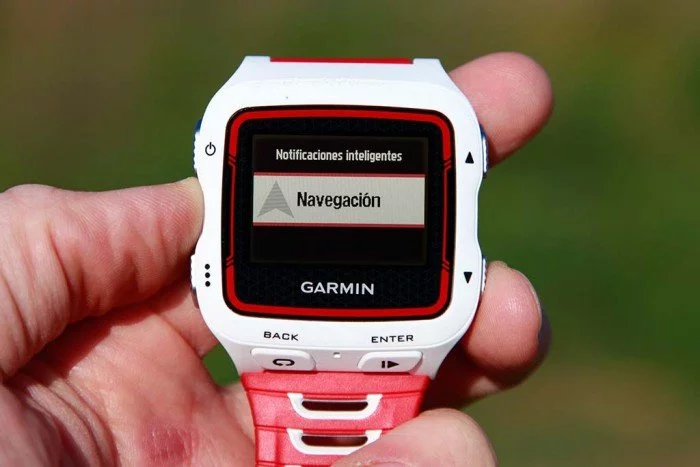
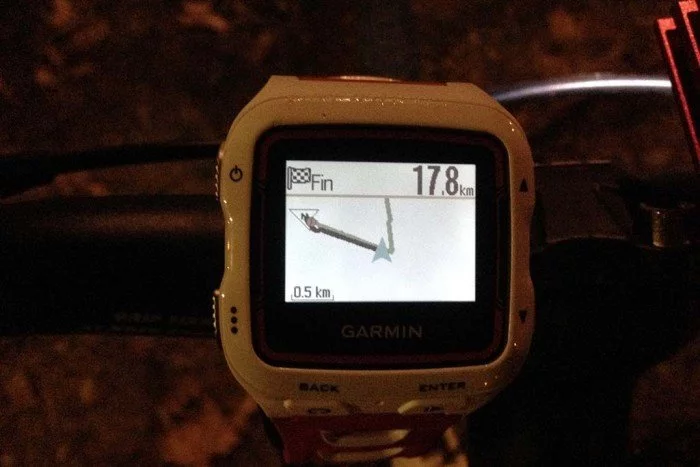
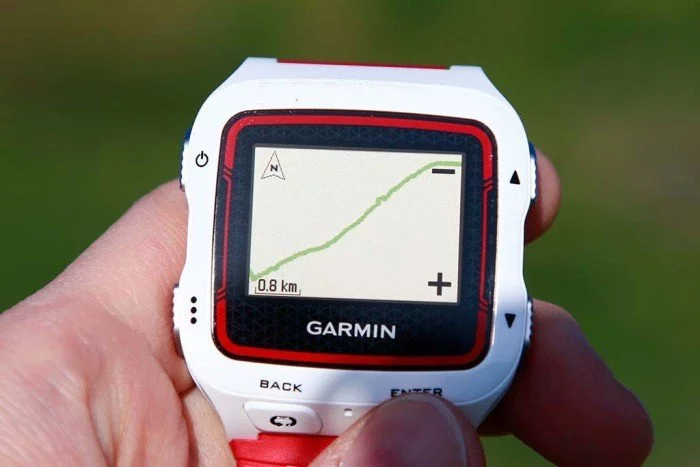
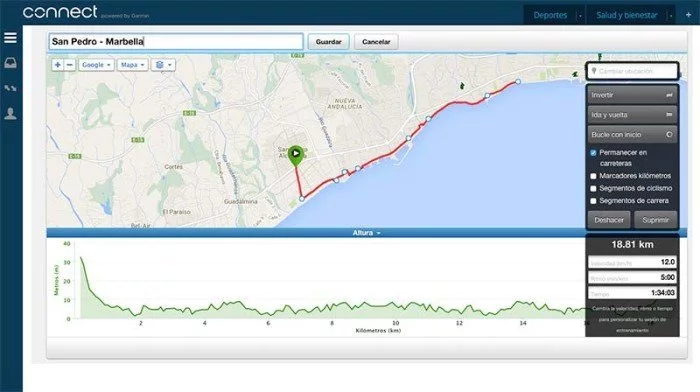
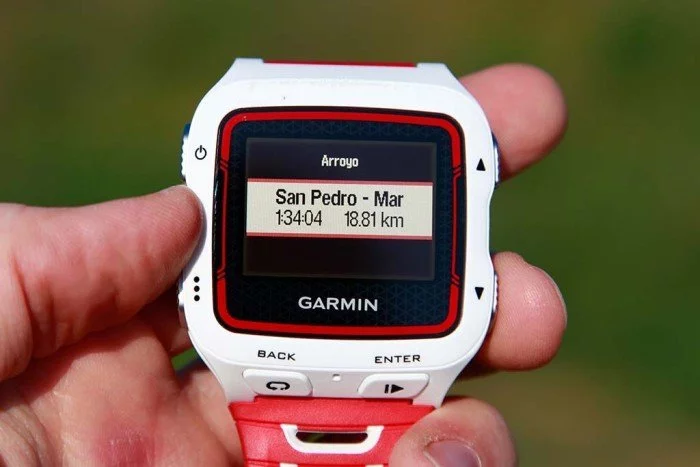
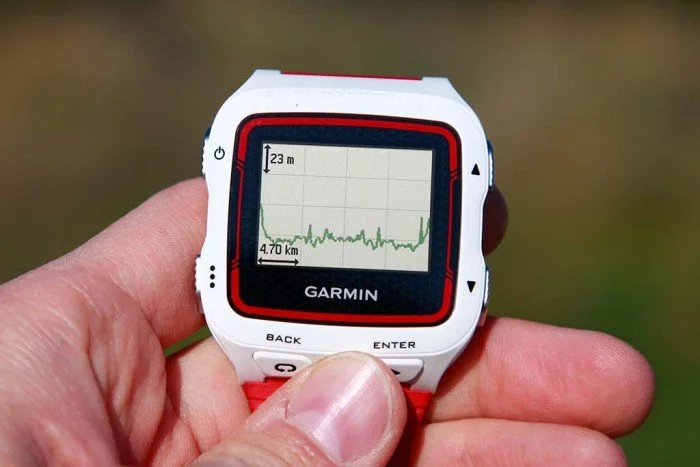
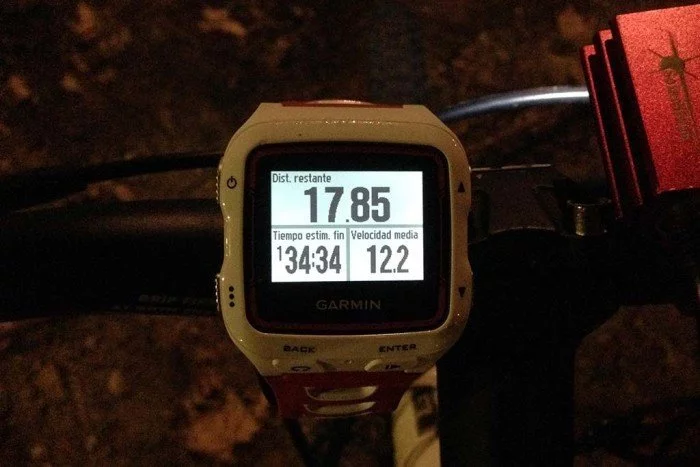
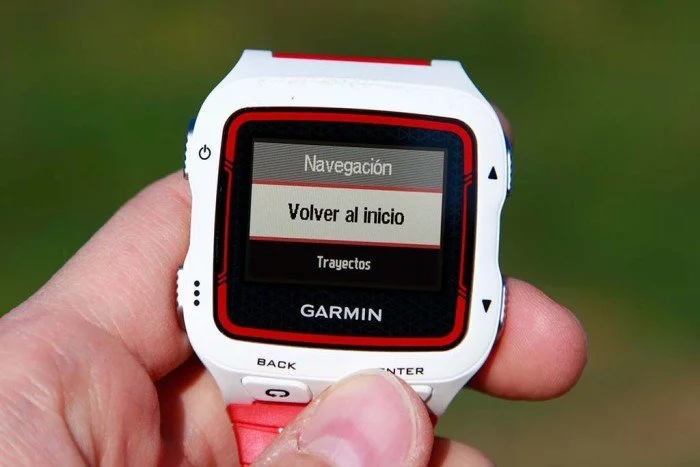

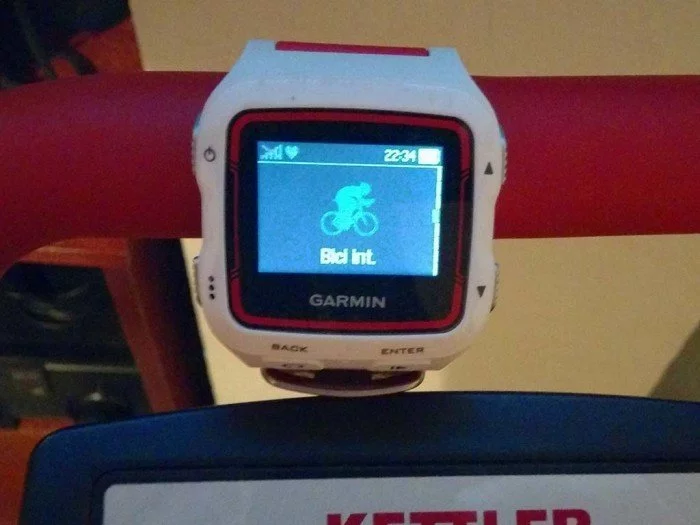
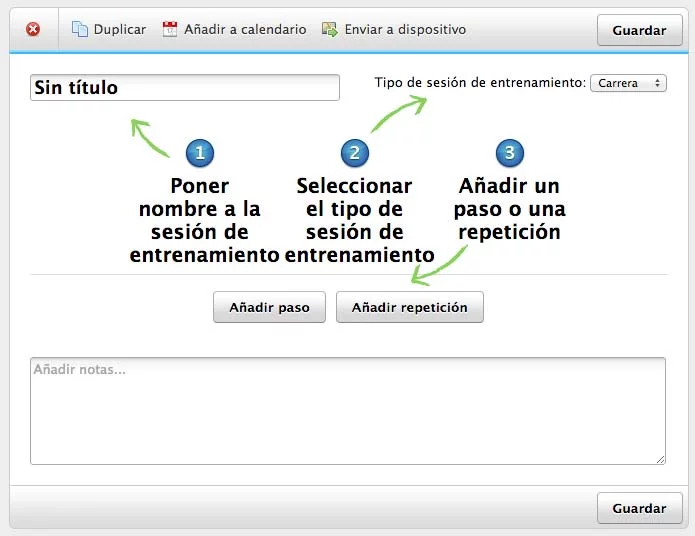


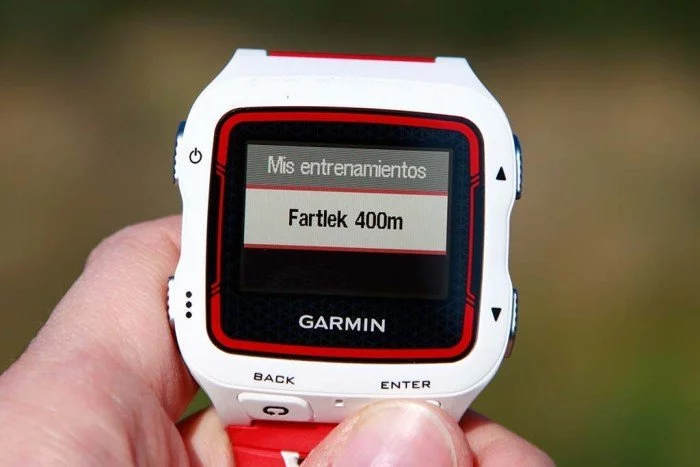
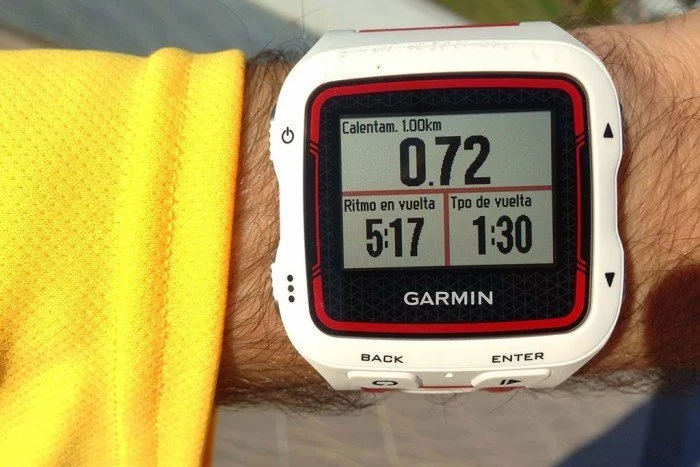
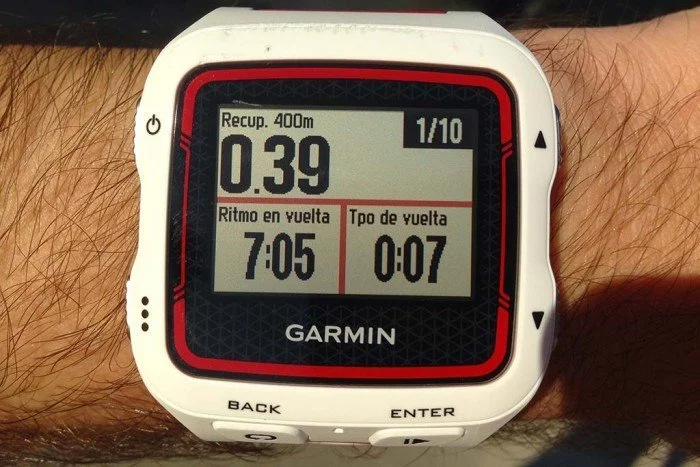
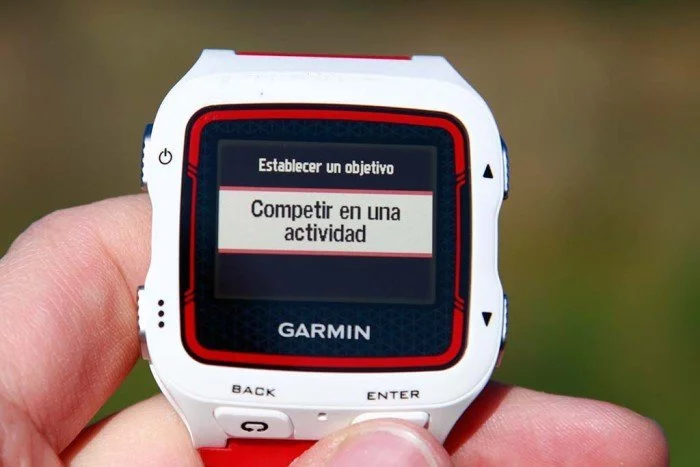
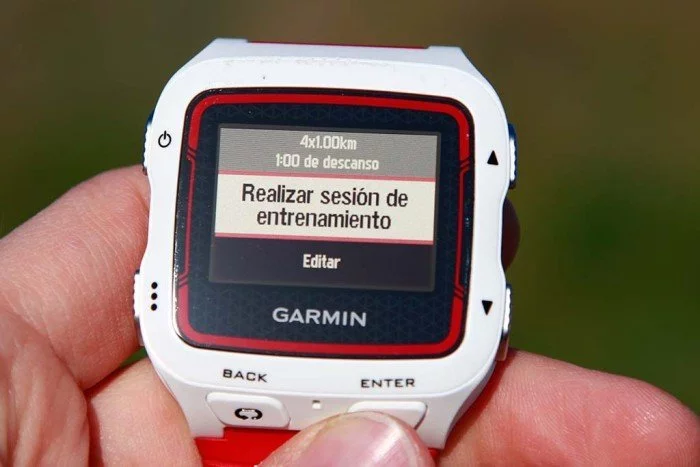
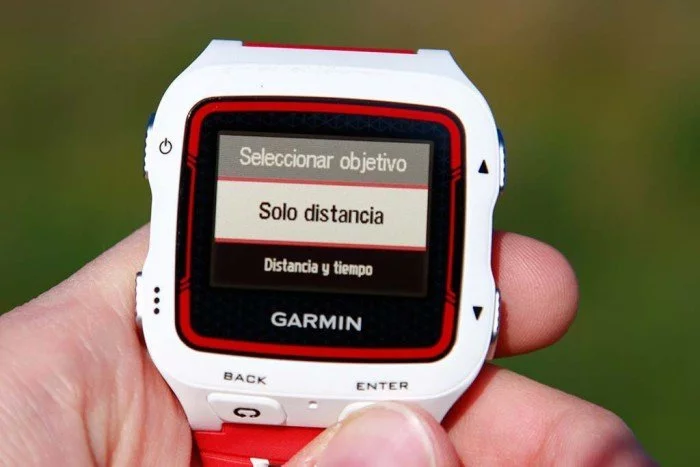

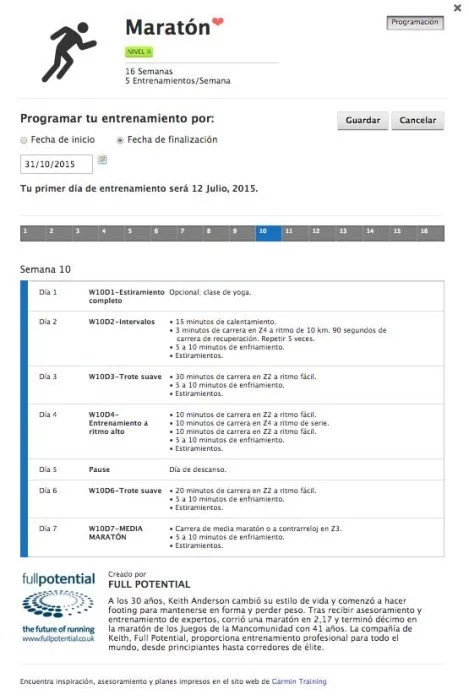
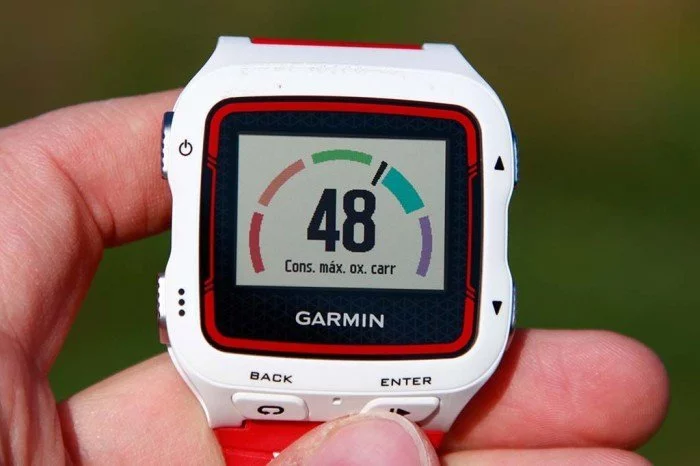
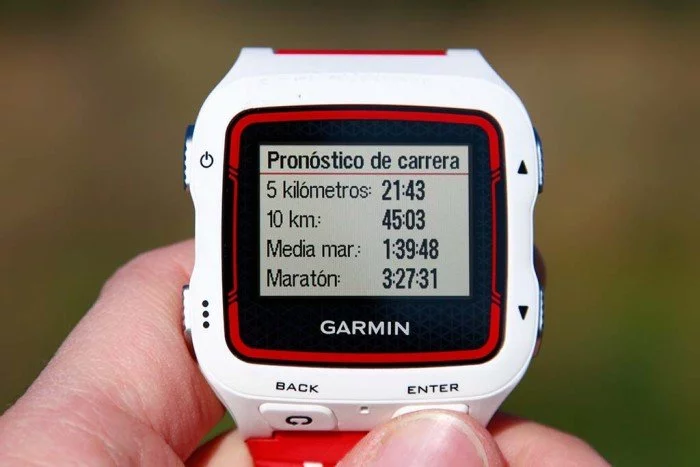
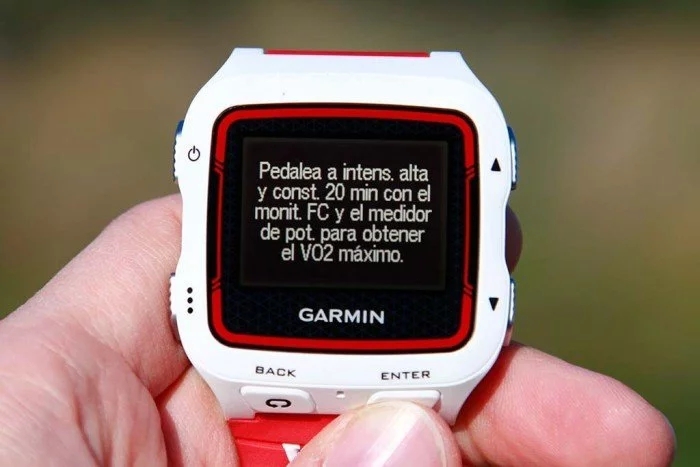
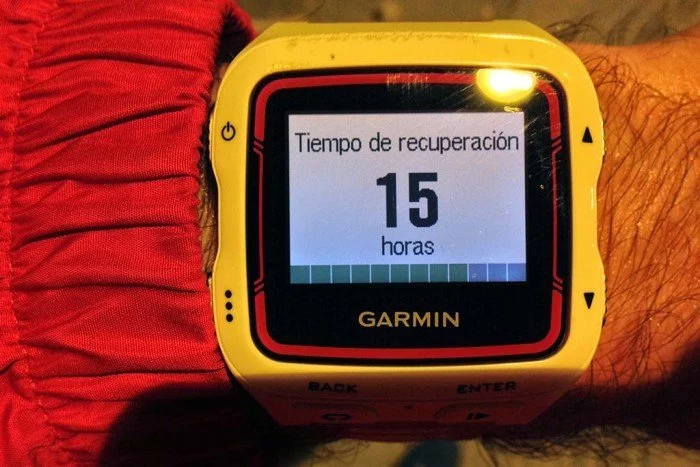
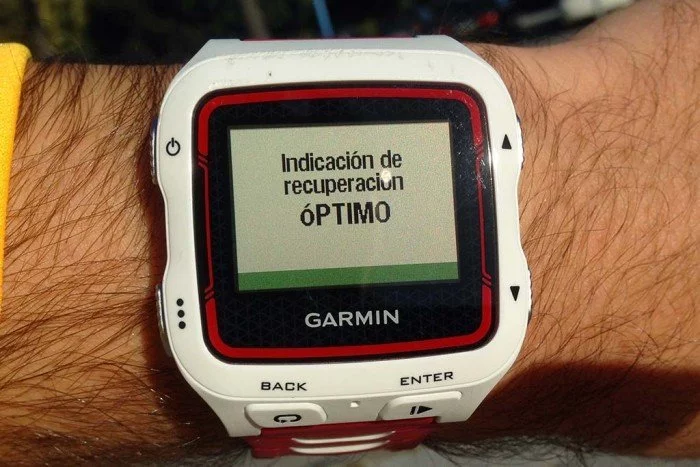
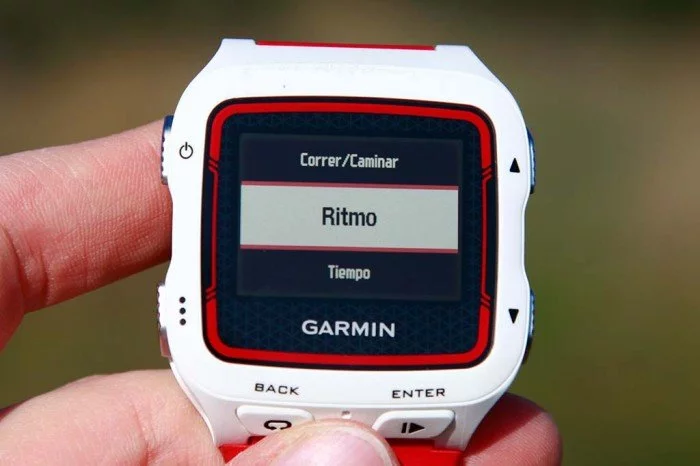
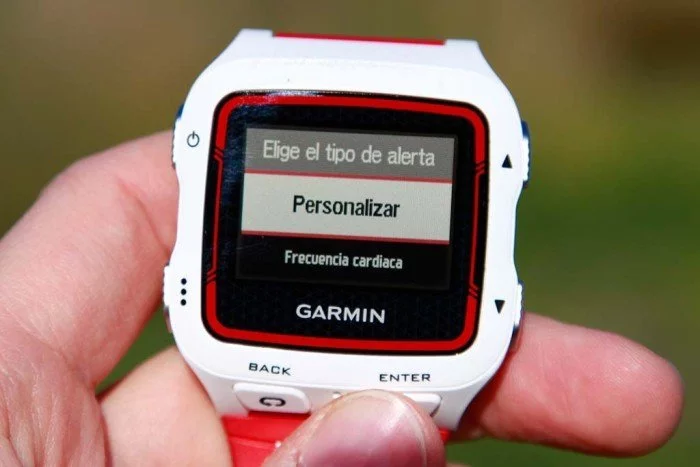
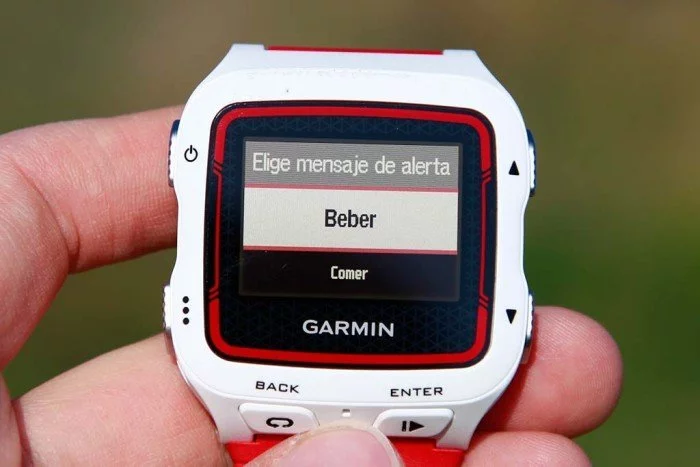
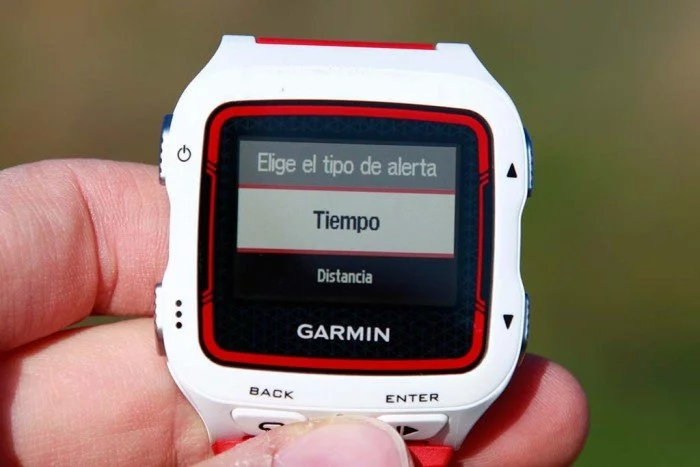
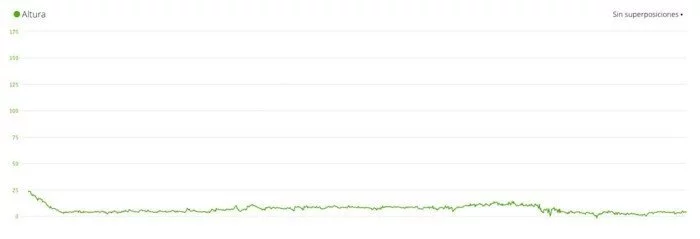
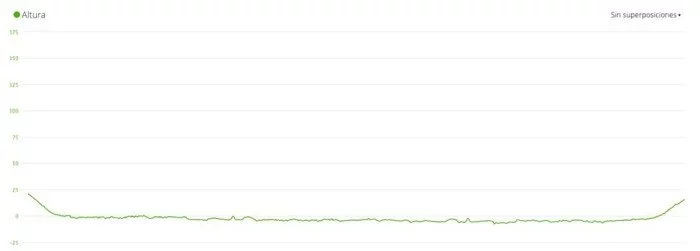
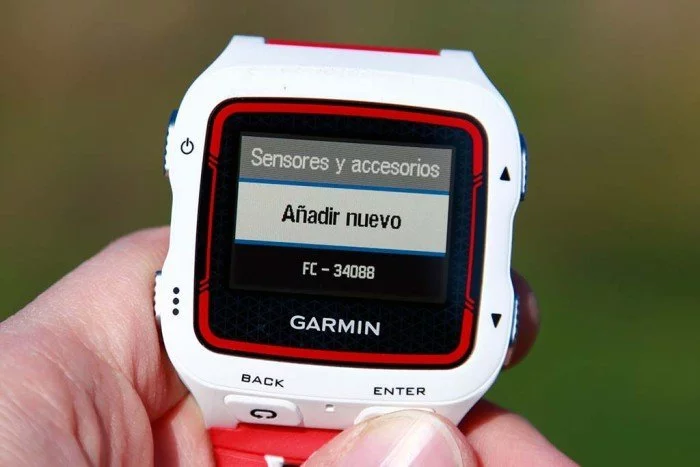
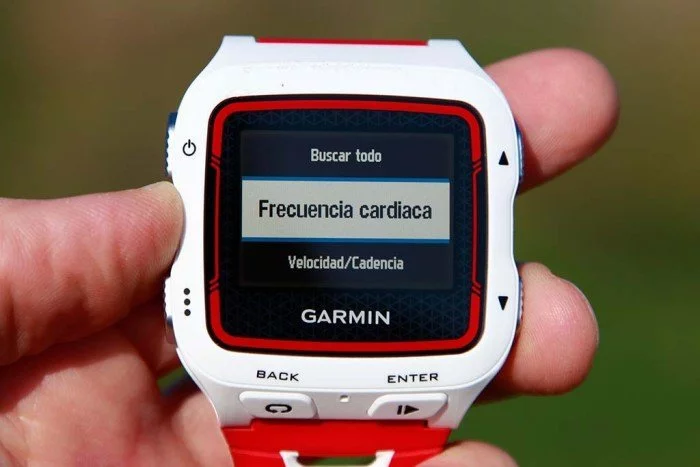

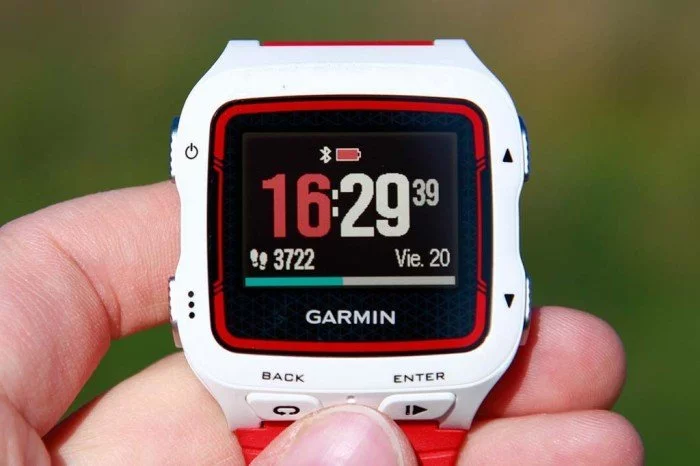
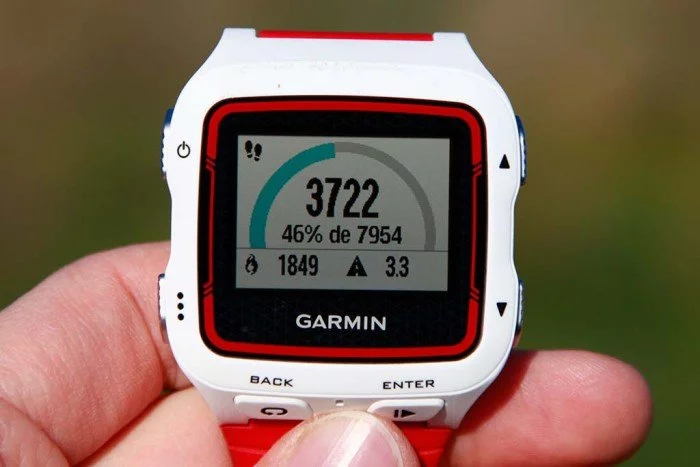

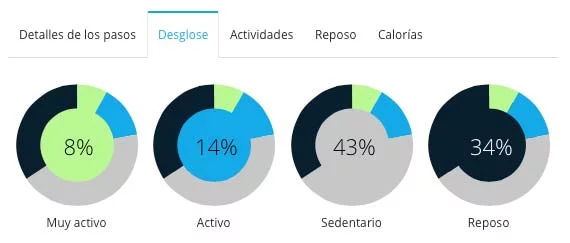
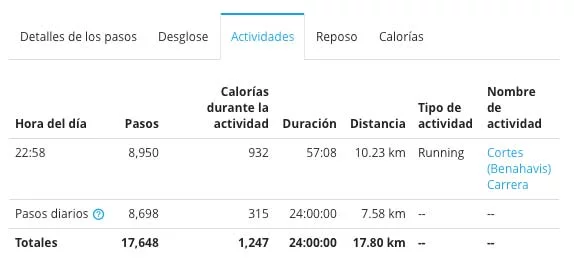
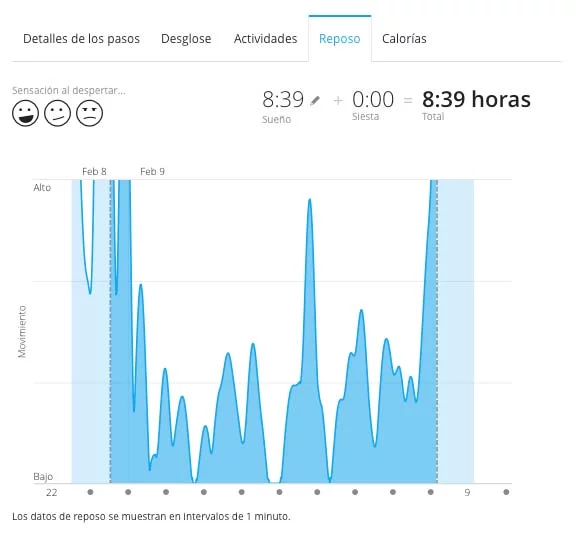
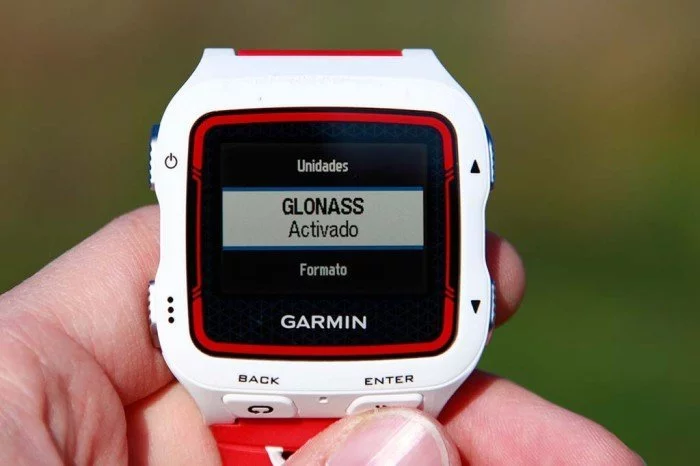
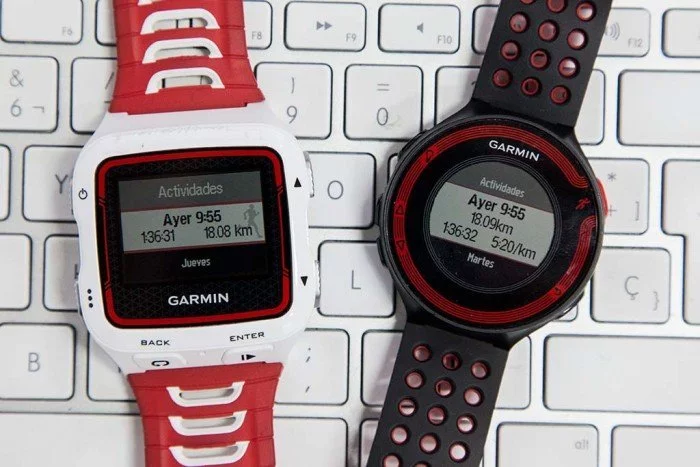
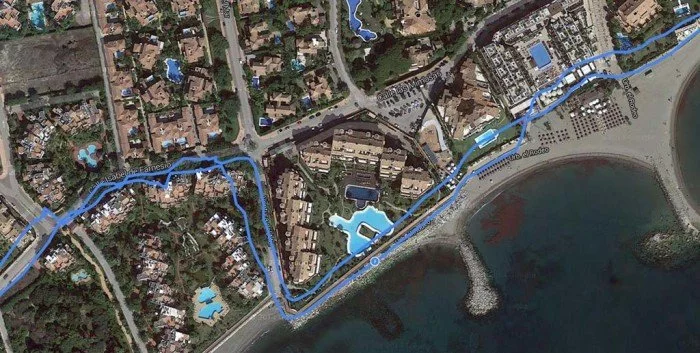
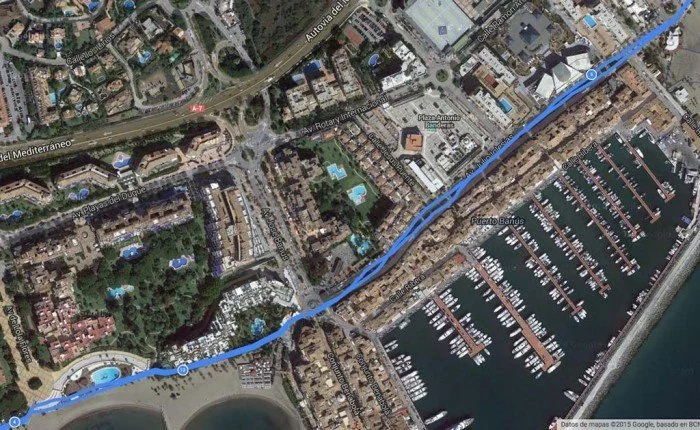
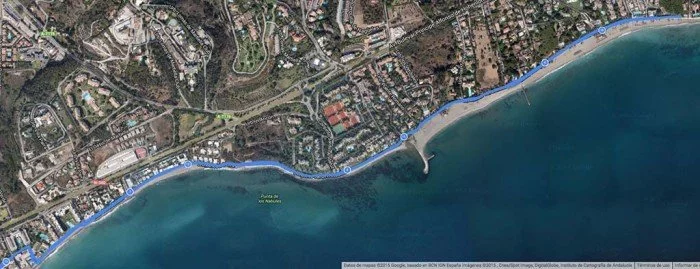
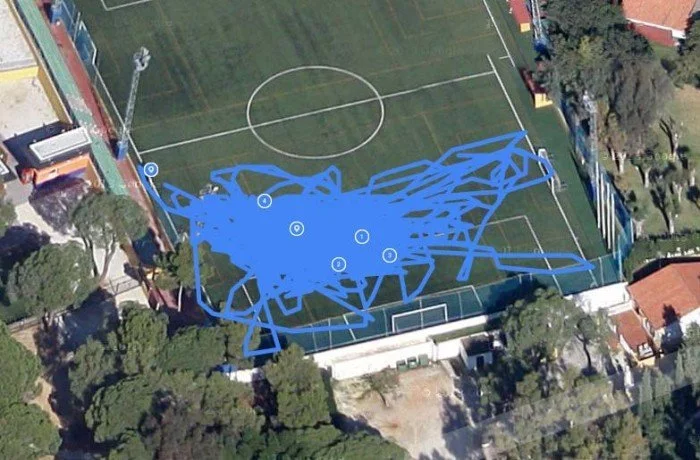


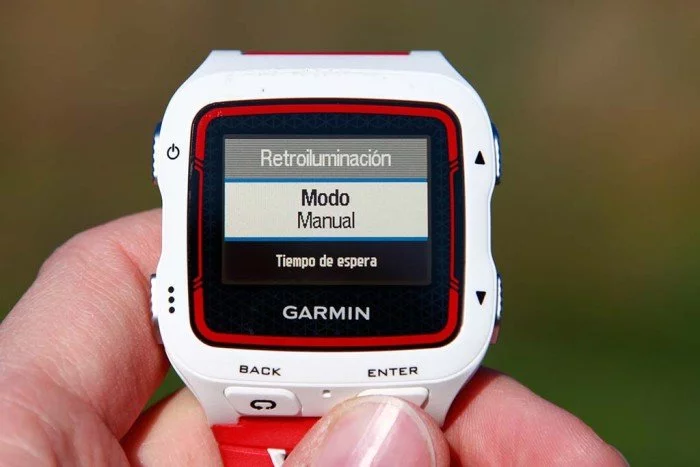
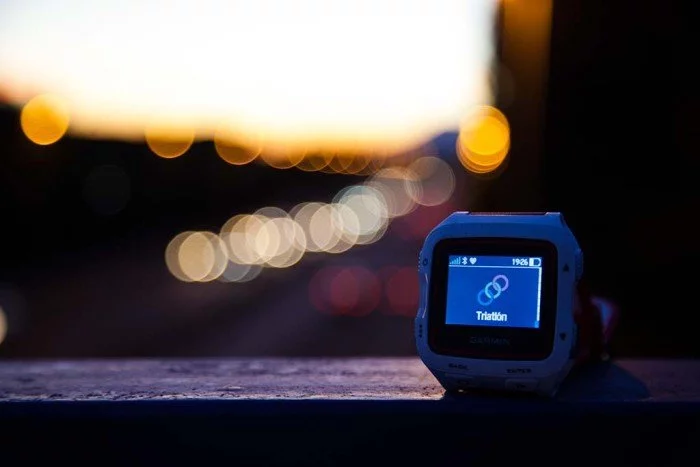

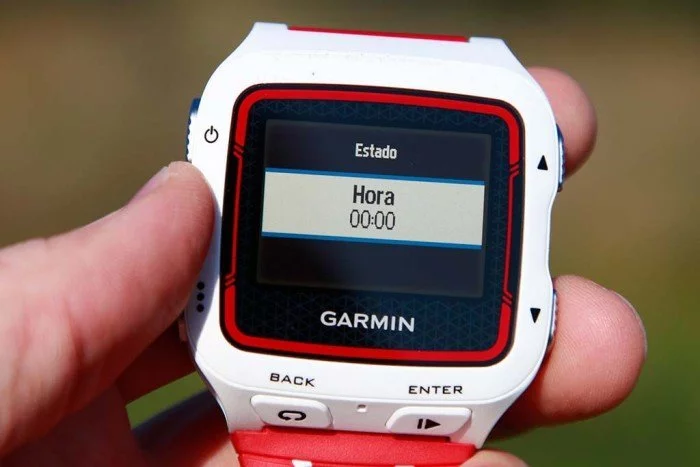
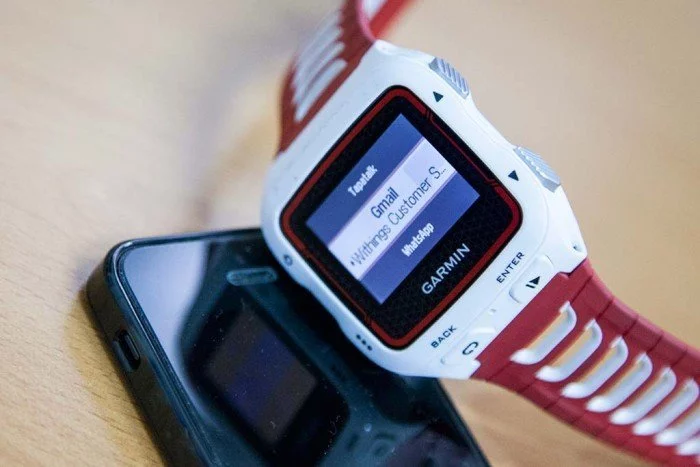
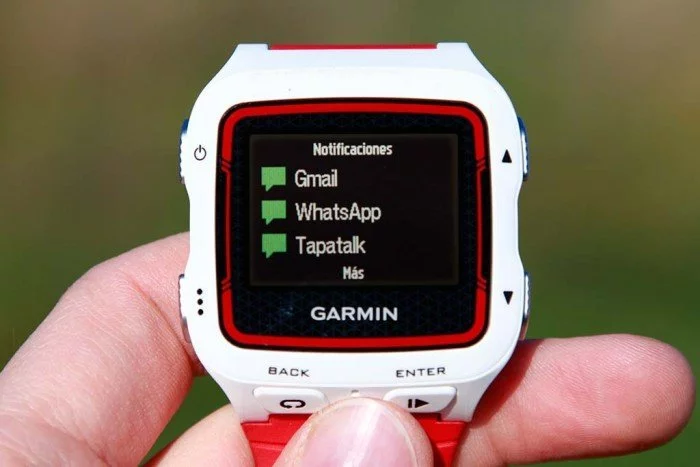
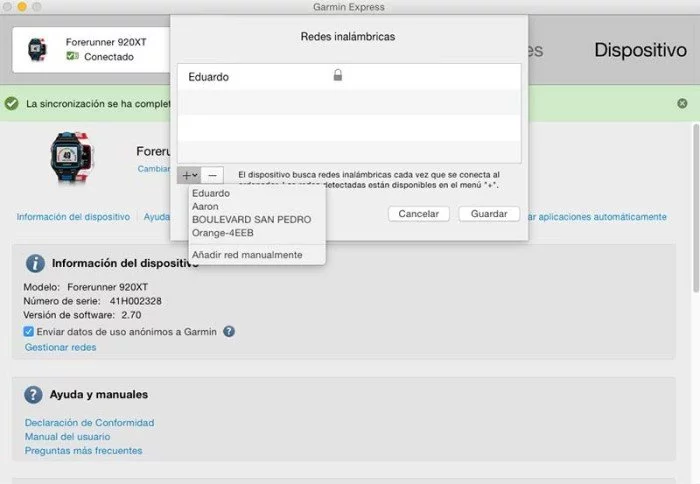
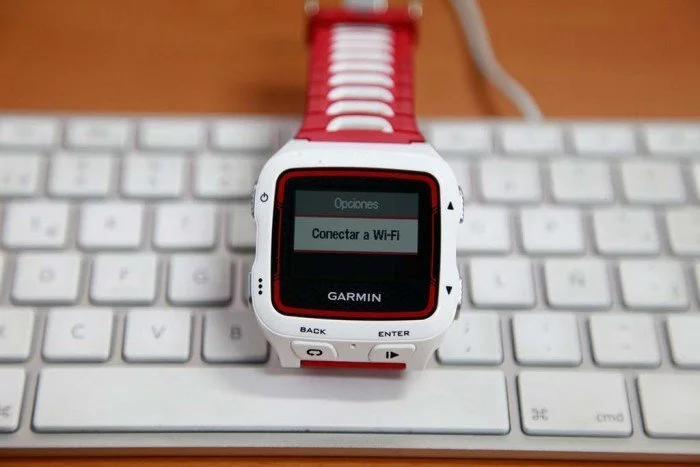
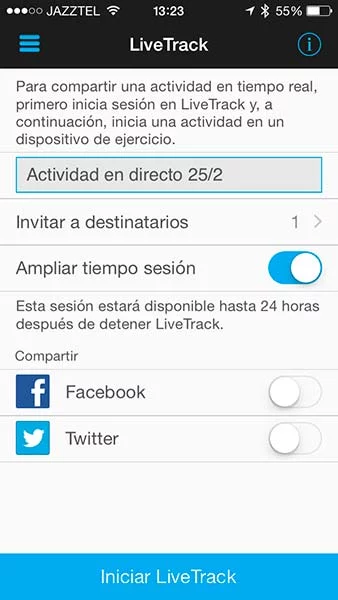
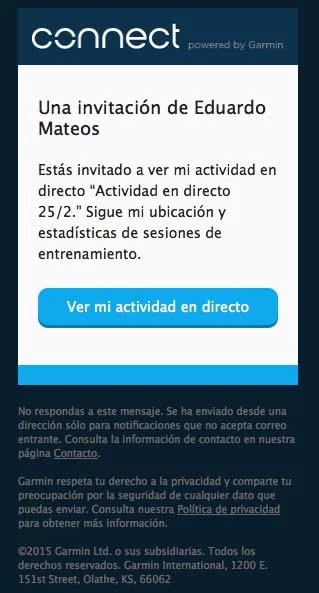
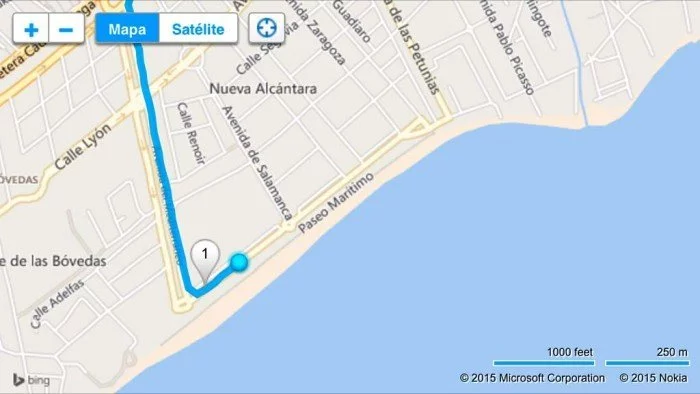

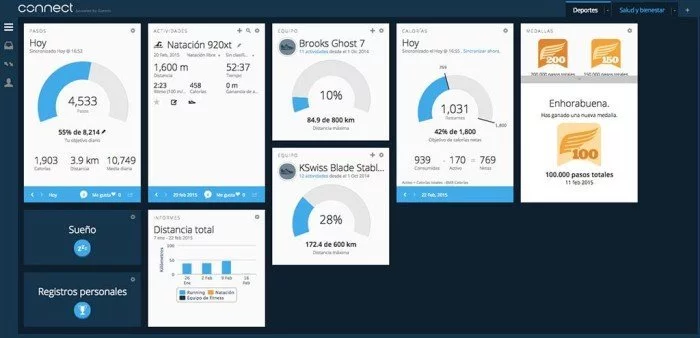
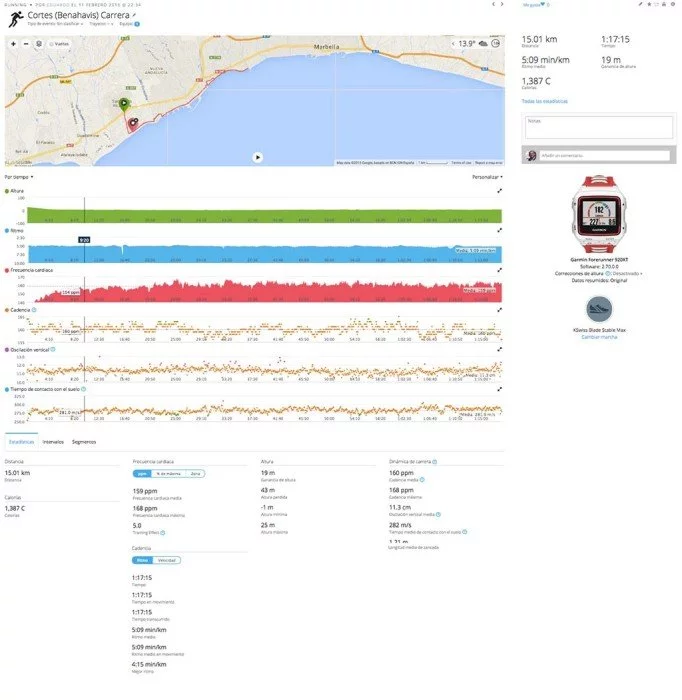
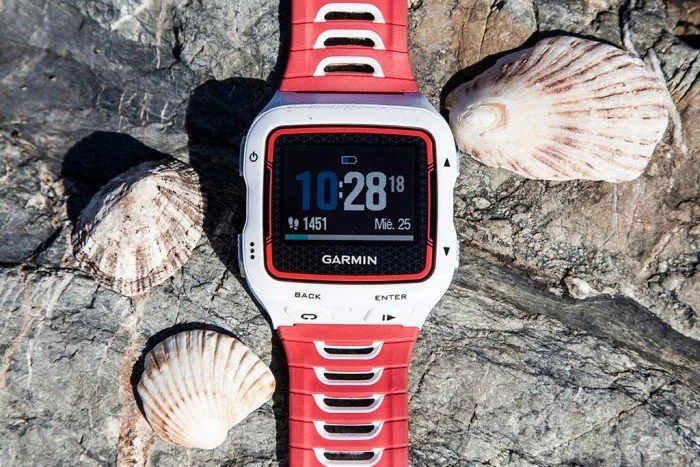
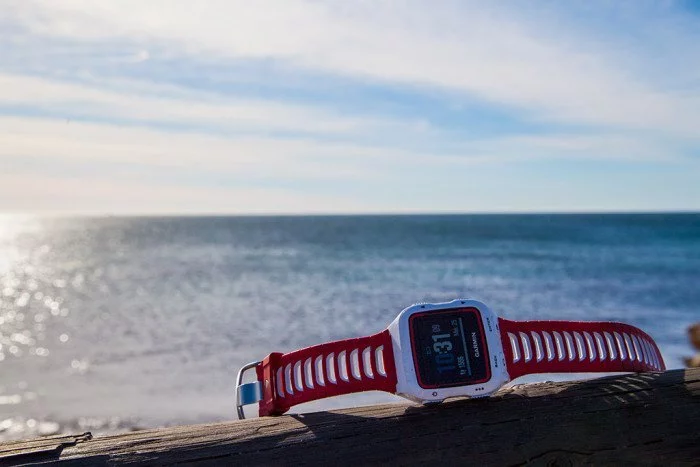
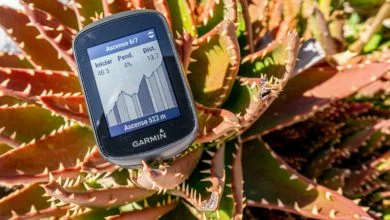
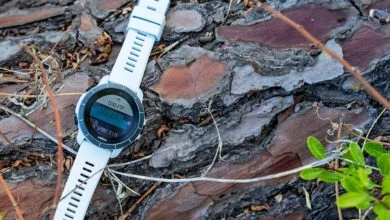
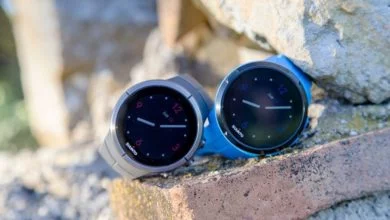
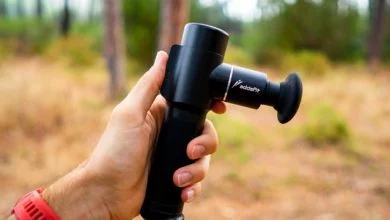
Muchísimas gracias por la prueba. Estoy en busca de un sustituto para mi Ambit 2 y el 920xt es uno de los candidatos. Vas a probar el Fénix 3? Cuándo? Porque si no tardases mucho, me gustaría esperar a leer tu opinión antes de tomar mi decisión final.
Y, de nuevo, muchas gracias!
Gracias a ti, Fran.
Si, tengo reservada una unidad del Fenix 3 (comprando directamente en tienda, pues a través de Garmin tardaría más tiempo), y quiero ponerme con el análisis lo antes posible. No te puedo dar fecha, porque la disponibilidad ahora mismo es bastante limitada.
Gracias por esta estupenda review. A punto de comprar un Ambit 3 Peak, pero un amigo me ha pasado esta direccion y me ha dicho que lo de la navegacion ya estaba arreglado. Ahora a meditar, porque con el 920 puedo mantener mis sensores ant actuales y ademas tendria vibracion.
Una pregunta, se pueden meter rutas bajadas de wikiloc?
Gracias Jordi
No puedes meter rutas de forma directa, pero sí puedes importar esas rutas en BaseCamp y, desde ahí, llevarlas al reloj.
Muchas gracias por el análisis. Se echaba en falta un análisis tan profundo como el tuyo, tocando cada uno de los aspectos del reloj.
Me has aclarado bastantes dudas que tenía.
Como hago trail, ahora lo único es saber si tiro por este o por el fénix 3.
A ver si no tarda en salir mucho y vemos tu review.
Muchas gracias
Hola Ajota
Gracias por tus comentarios.
En cuanto a decidirse por el 920xt o por el Fenix 3, en primer lugar recomendarte que esperes, pues ya tengo un Fenix 3 encargado y espero recibirlo a lo largo de este mes, para poder ponerme con la prueba cuanto antes. Por la información y comparándolo también con el Fenix 2, si tus salidas de trail son del tipo seguir una ruta de navegación, pero sin «aventura», cualquiera de los dos te servirán.
Pero en el Fenix 3 vas a encontrar alguna otra característica más propia de relojes de aventura (sight ‘n go, barómetro, aviso de tormenta, altímetro en pantalla, etc).
Es decir, el 920xt es principalmente un reloj para triatletas con un soporte básico de navegación, que será suficiente para la inmensa mayoría. El Fenix 3 es un reloj de aventura que, además, servirá para multideporte e incluso para hacer triatlón. No se si me entiendes con la diferenciación…
Soy un desesperado y como ves me pillen un 920. Soy lo peor jaja. Me gustaba más por todo el fénix 3 pero no podía esperar.
Buenas anota, que tal tu carmín 920xt, has tenido algún problema con el? Ya que estoy mirando para comprarme un reloj gps. A dia de hoy repetirías su compra?
Muy buenas, ya te felicite en el foro mtb por tu review y lo vuelvo a hacer. Felicidades,esta muy bien y muy cerrada.
Ahora que tengo uno, quería hacerte una pregunta. Anoche me lo puse por primera vez para dormir, y al sincronizarlo, no me pone nada de estadísticas de sueño. Solo pone las horas de sueño que yo lo había programado. Es decir, cuando me voy a dormir y cuando me despierto.
Hay que hacer algún tipo de cambio en la configuración en el dispositivo en Garcia connect?
Un saludo y gracias
La detección del sueño no es automática, tienes que activarlo de forma manual. Dentro del «widget» del monitor de actividad, presiona enter o mantén el botón de modo presionado, para activar el modo noche. Por la mañana cuando te despiertes desactivarás el modo nocturno.
Una vez que hagas la sincronización con Garmin Connect, entonces te aparecerán los datos correctamente.
Así lo hice , cuando me fui a acostar lo puse en modo sueño y cuando me levante, lo quite, pero no salió nada
Prueba de nuevo esta noche, pues el procedimiento es ese. Activar el modo de forma manual y desactivarlo por la mañana.
Hoy parece que si lo pillo. Lo que es una pena que no diferencie entre sueño ligero y profundo como hacen algunas pulseras. A ver si garmin con alguna actualización lo pone
Buenos dias Eduardo, he leido por lo menos 3 veces tu analisis y lo primero felicitarte por este excelente trabajo clarificador de dudas; en segundo lugar me gustaria saber cual es tu opinion entre elegir este reloj y el fenix 3 para una persona que se dedica a duatlon.
Porque esteticamente el fenix es mucho mas bonito, pero el tema de la extraccion rapida del 920 es un punto a favor del forerunner. Un saludo y muchas gracias.
Hola Manu
Gracias.
Si vas a hacer competiciones de duatlón, la posibilidad de extracción rápida del 920xt creo que va a ser primordial. En cuanto a posibilidades del reloj, el Fenix 3 está «construido» encima del 920xt, ampliando opciones de navegación y funciones del barómetro, más enfocadas a la montaña. Todo lo demás tiene el mismo funcionamiento.
En tu caso creo que debes decidir entre la funcionalidad y rapidez de la extracción rápida, o la estética y opciones adicionales de montaña del Fenix 3. Y creo que te va a compensar más el poder adaptar el kit de extracción rápida.
Hola Edu.
Muy bueno el review. Pero quisiera saber que piesnas del Polar V800 y su comparacion al 920 XT?
Hola Jen
El V800 es un gran equipo, aunque globalmente el 920xt me parece mejor producto, es más maduro.
Eso si, en materiales, monitor de actividad y posibilidad de pulsaciones bajo el agua, el V800 es superior. Si para ti alguno de esos dos aspectos son muy importantes, será una mejor elección.
Gracias Eduardo. Saludos desde Republica Dominicana.
Hola!!!
muy buen análisis!!! excelente
es la misma unidad que nos dejaron a nosotros en el blog zitaSport, he mirado el nº de serie, que bueno!!!
el lunes publicamos sobre Garmin IQ así que pasate a ver si te gusta…
excelente trabajo y minucioso, tenemos que buscar sinergias. Muy buen trabajo.
saludos
Hola Gabriel
Gracias por tus palabras. Me alegro que te haya gustado el análisis.
Si, al final son muy pocas unidades las disponibles para todos, así que entre una cosa u otra al final tardamos más de lo que quisiéramos en tenerlos disponibles. Así que por eso en muchas ocasiones compro el reloj directamente…
Me pasaré a leer el artículo, seguro.
Buenas Eduardo,
Lo primero felicitarte por el análisis, muy completo. Tengo el Garmin 920xt dsd hace una semana y muy contento, pero me han surgido un par de dudas… lo primero es una vez puesta la pantalla de inicio con el grafico de la actividad y demas… he visto que de vez en cuando me sale una letra z en la pantalla, justo encima del circulito que te marca los pasos… q es? puede que sea q tengo poca actividad desde hace un rato y por eso sale… pero no estoy seguro… xq se acumulan bastantes alguna vez…
La segunda pregunta es algo que me ha inquietado bastante… resulta q despues de cargar el reloj (no se si esto influyó o no) observe q estaba consumiendo bateria mas rápido de lo normal… (10 % en algo mas de una hora) y en las pantallas de inactividad observé, en la segunda q te marca los pasos, una linea roja abajo del grafico de pasos que se movia… (linea con final en punta)… y resuta que al cabo de un rato esta linea desprecio y el reloj dejo de consumir bateria tan rapido… (consumió un 1% en dos horas y media, lo cual considero normal) ¿sabes algo al respecto?
Gracias y un saludo.
Hola Julián
Creo que a lo primero que te refieres es que has activado el modo sueño de forma manual.
En cuanto a la segunda línea a la que te refieres, te está indicando que llevas bastante tiempo inactivo. Pero eso no tiene nada que ver con el consumo de batería.
Sinceramente creo que no me equivoco al decir que por el precio que vale el reloj… bien podría traer un adaptador de corriente para enchufarlo y cargarlo. el Fenix 3 lo incluye. parecerá una tontería pero a algunos como yo nos gusta poder enchufar el dispositivo a su cargador y adaptador correspondiente
Hola Eduardo, felicidades por el análisis tan completo, me ha venido muy bien ya que llevo unas pocas horas con el bicho. El problema que tengo es que mi teléfono es un nokia 925 con windows phone 8.1 y no hay manera de conectar las notificaciones, el móvil si que reconoce el 920xt pero no conecta, imagino que es porque falta el software connect para windows phone.
Efectivamente, las notificaciones son sólo compatibles con iOS y Android. Para que el emparejamiento sea correcto, ha de hacerse a través de la aplicación Connect de Garmin, que no existe para Windows Phone.
Hola Eduardo!
Antes que nada felicitarte por el review, muy bueno! yo soy triatleta y actualmente uso el Fenix 2, que en temas de entrenamiento es muy preciso pero a la hora de usarlo en competencia nunca me da los datos reales, o falla en la nadada o en la bicicleta pero siempre algo sale mal, estaba pensando en cambiarlo y por tu resumen probare con el 920.
Una vez mas felicidades por tu review y como detalle, hasta ahora ningún triatleta amateur o profesional ha completado un Triatlon Sprint en 40 minutos !!! jajajaja, recibe un gran abrazo!
Gracias Álex.
Para uso en triatlón creo que es una buena idea el pasar del Fenix 2 al 920xt. Es un reloj que está diseñado específicamente para ese uso.
Sobre el tiempo… ¿qué sería de vosotros si no os motivara? A partir de ahora no os quiero ver a ninguno subir de 50 minutos, y no quiero excusas con las transiciones :D.
Tienes toda la razón, no se en qué estaría pensando. Supongo que en cualquier otro tipo de prueba y terminé poniendo triatlón sprint… ¡aprovecho a corregirlo! (que luego me llaman loco).
Por cierto, ¡no te olvides de votar para los Premios Bitácoras!
Acabo de revisar, ¡y esta vez no he fallado yo! Era el súper sprint al que me estaba refiriendo, aún más corto que el sprint (si, de esos de ir con el corazón en la boca), y por eso los 40 minutos… 😉
Lo que no encuentro es cómo modificar el número de campos de datos que se ven, ¿puedes ayudarme? Gracias
En configuración de actividad, pantallas de datos y disposición
Lo primero darte la enhorabuena por tu dedicación a estos análisis que haces. Es para quitarse el sombrero.
Gracias a uno de tus enlaces, me he cogido este reloj y con un buen descuento. Aunque no soy triatleta, si me gusta salir a correr y coger la bici, pero quien sabe el dia de mañana, lo mismo me animo a hacer alguna triatlón jaja…así que bueno, aunque estará algo desaprovechado ahora espero sacarle partido.
Muchas gracias por tu gran trabajo aquí en esta página 😉
Saludos.
Gracias a ti 😉
Buenos días Eduardo, ¿hay noticias de si se actualizara el 920xt con las opciones de dinámica de carrera que incorpora el 630, tipo lactato, …? Muchas gracias, Segor
El día 5 se lanzó actualización para las nuevas dinámicas ( http://www8.garmin.com/support/download_details.jsp?id=7249). Sobre el resto de novedades, Garmin aún no se ha pronunciado al respecto. Y si no han dicho nada, tal vez «lo guarden» para cuando tengan que presentar el 930xt.
Muy buena la revisión. Tengo una duda, quiero usar el metrónomo pero sólo puedo activarlo con la frecuencia cardíaca. Sabes si se puede activar con la cadencia de paso?
Las indicaciones que te aparecen no son para la frecuencia cardíaca, son para los pasos. Tienes que acompasar tu cadencia a los pitidos y vibraciones que da el reloj.
Hola. Ante todo muchas gracias por el análisis realizado.
Tengo el Garmin 920xt y se quedó bloqueado. Lo apago y al encenderlo sale en pantalla GARMIN y no responden los botones. Tampoco funciona al conectarlo al ordenador. No encuentro respuesta en el manual de usuario
Muchas gracias. Un saludo
¿Has probado a hacer el procedimiento de reseteo con los botones, como indica en el manual? Si eso no te lo soluciona, tendrás que enviarlo a garantía.
Buenos días EDUARDO
Tengo problemas para conectar mi Garmin 920 xt con un Ifhone 5S veo las llamadas en la pantalla pero no recibo aviso de Whatsapp ni de Correos electrónicos
Muchas gracias
Debes emparejar el reloj desde la aplicación Garmin Connect, no desde los ajustes del teléfono
Hola Eduardo !
Espero que este mensaje pueda postearse porque con el anterior no pude ( y te molesté por contacto). Me parece importante que se sepa este gran problema sobre el 920XT. Hace una semana que lo tengo y esto me ha desilucionado. No haberlo visto antes !!!
https://forums.garmin.com/showthread.php?122923-Swim-activities-on-GC-Calendar&highlight=920xt+pool+swim+training+plan
Excelente tu blog !!!! Muy agradecido !!!! Saludos….
Hola Eduardo !
Viendo que por aquí si se posteó mi mensaje, te copio parte del que no pude mandar en la pagina del excelente análisis del FR 920XT. El error que comento en el anterior me parece enorme, ya que al igual que muchas personas, me decidí a comprarlo para uso de triatlón, y que no pueda agendar el entreno de piscina me parece terrorífico.
«… Llegué aquí tratando de encontrar solución a una pequeña limitación (quizas no lo sepa usar todavía), que es la de no tener un timer o temporizador descendente.
Instalé GymTimer de Connect IQ que es lo que quería pero no lo puedo usar conjuntamente con mi actividad creada «fuerza». Salgo de esta última y me muestra el tiempo transcurrido en el angulo sup/izq. de su pantalla presentación, pero cuando cambio de actividad ya no se encuentra disponible la pantalla de IQ Aplicaciones para poder usar el timer. Hay alguna solución para esto ? O tiene un «timer» por ahi y yo no lo puedo ver?
Desde ya muchas gracias !!!!! Saludos desde Argentina ! :D»
No, el reloj no tiene cuenta atrás. Si necesitas controlar tiempo deberás hacerlo fijándote en el tiempo transcurrido de actividad.
En cuanto a Gym Timer, es una aplicación, al igual que la aplicación de Fuerza que has creado. Por lo tanto no puedes ejecutar dos aplicaciones a la vez.
Muchas Gracias por la respuesta ! Pensé que al dejarme sali,r sin interrumpir de la actividad «Fuerza,» podría usar la otra aplicación. Puedo navegar por las otras actividades al salir, pero se activa la ultima y se detiene la anterior. Lo notablees que la pantalla de IQ Aplicaciones ni aparece. Gran abrazo y nuevas felicitaciones por el blog !!!! 😀
No, sólo puedes tener una aplicación abierta, en este caso el temporizador o la aplicación de Fuerza.
No, sólo puedes tener una aplicación abierta, en este caso el temporizador o la aplicación de Fuerza.
Hola!
Tengo este Garmin y estoy encantado, pero tengo una duda, se puede saber (igual que se podía en el 410) el porcentaje en tanto por ciento de batería que le queda? Mirando el indicador de batería pienso que le queda poco y cuando lo pongo a cargar veo que aún le quedaba como para un día o dos de carga, y cuanto menos lo ponga a cargar supongo que será mejor.
Gracias!!
Puedes instalar cualquier esfera de reloj de Connect IQ que incluya ese dato.
Hola Eduardo !
Excelente tu página. La mejor que he encontrado desde hace una semana que tengo el 920. Llegué aquí tratando de encontrar solución a una pequeña limitación (quizas no lo sepa usar todavía), que es la de no tener un timer o temporizador descendente.
Instalé GymTimer de Connect IQ que es lo que quería pero no lo puedo usar conjuntamente con mi actividad creada «fuerza». Salgo de esta última y me muestra el tiempo transcurrido en el angulo sup/izq. de su pantalla presentación, pero cuando cambio de actividad ya no se encuentra disponible la pantalla de IQ Aplicaciones para poder usar el timer. Hay alguna solución para esto ?
Desde ya muchas gracias !!!!! Saludos desde Argentina ! 😀
Del anterior sumo… Hay algún «timer» que tenga y yo no lo estoy viendo ?
Y me parece importante que se sepa este gran problema sobre el 920XT. Hace una semana que lo tengo y esto me ha desilusionado. No haberlo visto antes !!!
No guarda en el calendario los entrenamientos de piscina de los planes de triatlon de Connect, y no se si será solo mi caso, no hay planes de entrenamiento de piscina y tampoco me habilita a crear uno !
https://forums.garmin.com/showthread.php?122923-Swim-activities-on-GC-Calendar&highlight=920xt+pool+swim+training+plan
Excelente tu blog !!!! Muy agradecido !!!! Saludos….
Mil Disculpas !!!!! 3:57 hs despues, cuando vengo a ver si hay alguna respuesta, me doy cuenta que habías trasladado aqui los post. Saludos ! 😀
Hola. En el video que haces como marca el ritmo al empezar a correr. Mi reloj me marca correctamente la velocidad en la actividad de ciclismo, pero en la actividad de carrera no me marca igual que a ti. Me varia la velocidad/ritmo muy lentamente. He hablado con los de Garmin y me han cambiado el reloj 3 veces, pero todos los dispositivos funcionan mal. Ninguno funciona como el video que has grabado tu. Sabes si hay que configurarlo de algún modo o algo para que muestre la variabilidad de ritmo como a ti???
Depende del campo de datos elegido. Asegúrate que el campo que tienes seleccionado es el ritmo instantáneo (si es ese el que quieres) y no ritmo en vuelta o ritmo total.
Si lo tengo todo bien es fallo del reloj. Ya es el tercero que me cambian… Estoy un poquito harto.
Hola EDUARDO!
Primero, gran articulo! Luego tengo una duda… En el modo BICI INDOOR no marca la distancia en una bici estática. Aunque una vez transferida la actividad a Gamrin Connect puedes modificar el campo distancia… hay alguna manera de hacerlo ya de inicio sin tener que modificarlo después? …seguro que en una bici con sensor de cadencia se puede, pero por ejemplo, si estamos en una clase de Spinning?
Si tienes la respuesta genial y gracias de antemano!
Si la bicicleta no tiene sensores de ningún tipo, no es posible que el reloj tengas datos de distancia
Muchas gracias por tu rapida respuesta!
Hola Eduardo:
¿no se pueden modificar el total de metros hechos en natación, en el Garmin Connect?
Gracias anticipadas.
No, en Connect no es posible hacerlo
me interesaría saber como puedo aplicar el modo sueño..que es de suma importancia para ver como late mi corazon en reposo y si estoy descansando bien o estoy pasado de rosca y con strees
modo sueño..como activar
El modo nocturno es automático. Sólo los relojes con sensor óptico tienen datos de frecuencia cardiaca durante todo el día. Aunque lleves el sensor en el pecho durante todo el día en el 920 no es posible contar con esos datos
Buenas tardes Eduardo:
Me uno a las Felicitaciones por la revisión de 920 xt, gran trabajo!!!
bueno…tengo el reloj varios meses y se me plantean dos problemas, a ver si si puedes decirme si es problema mío o es un fallo del reloj.
– El primero de ellos es que cuando termino el entrenamiento con bateria baja, el entrenamiento no se sube a garmin connect por falta de bateria, eso lo entiendo…pero una vez cargado de nuevo, sincronizo el reloj y me aparece » transferencia finalizada»…pero la actividad no se sube a garmin connect por más que repito la operación.
– el segundo problema que se me ha planteado es que cuando realizo una ultra, si conecto el cargador del garmin a un cargador externo, finaliza la actividad por así decirlo , y se pone a cargar sin grabar los datos mientras sigo corriendo…con lo cual… los datos de la carrera se dividen en varios tracks, sin contar el tiempo que esté cargando el dispositivo, que esos datos se pierden…
¿SE TE HA PLANTEADO ESE PROBLEMA?
Gracias!!!
En el primer caso, si conectas el reloj con el cable USB podrás extraer el archivo FIT de la actividad que se queda a medias. Si el archivo no está corrupto, podrás importarlo manualmente a Connect.
En cuanto al segundo problema, cuando se conecta el cargador el reloj se pone en «modo USB», por lo que termina la grabación. Lo que te recomendaría es usar el modo UltraTRAC.
Muchas gracias Eduardo, ya he conseguido pasar las actividades a Connect…En la próxima ultra lo pondré en ese modo. Saludos
Hola buenas tardes Eduardo, te sigo desde hace mucho tiempo y te doy las gracias por lo que te curras la página. El motivo de contactar contigo es que me gustaría comprarme el Garmin FR920XT, vi tu análisis he imagino que es de la versión antigua por que actualmente está la versión que no te hace falta la correa para medir pulsaciones y un sinfín más de utilidades.
Actualmente estoy viendo que aún se puede comprar la versión antigua con pack en el pulsumetro o sin el pack comprando el reloj solamente.
Entonces mi duda es que me da un poco de miedo cogerme el nuevo y que por estar todo el día midiendo pulsaciones la vida de la batería sea más corta (nose si se puede activar o desactivar la opción esa desde el reloj), y estaba pensando en cogerme la versión anterior con el reloj solo y quería saber si poniéndole por ejemplo una pulsera tipo la mio link o la scosche sincronizándola al reloj tendría lo mismo que si llevara la banda pectoral ya que no me gusta porque es incomoda. Espero haberme expresado bien, espero tu ayuda ya que nose a quien poder preguntárselo, un saludo y gracias anticipadas.
La verdad es que creo que no merece la pena el comprar el 920XT para, después, comprar un sensor de pulso óptico aparte. El 735XT en ese aspecto es mucha mejor opción, y la duración de batería es más que suficiente en casi cualquier circunstancia.
una consultilla…el kit de extracción rápida del 910 es válido para el 920? gracias
No, tiene que ser específico y no son compatibles entre sí.
OK, muchas gracias Eduardo
Hola, me acabo de comprar el FR 920 xt HRM y tengo una dudilla ya jaja. Estoy siguiendo un plan de entrenamiento de los que proporciona Garmin. Se trata de un plan para realizar un triatlón sprint. Bien, sincronicé el plan y me aparecen todas las sesiones menos las de natación, las cuales solo aparecen como notas en G-Connect y en el reloj no aparecen o no las encuentro. Esto ¿por qué es? las actividades de carrera y de ciclismo sí me las marca y me da opción de realizarlas.
Por cierto, felicidades por este gran artículo.
Un saludo desde Lugo.
Probablemente se deba a que el plan de entrenamiento fue creado antes de la actualización para soporte de entrenamientos de natación, que es algo más reciente (mediados de 2016).
Vale, probablemente sea eso porque dar me da opción a crearlo y luego meterlo yo en el calendario de entreno. Muchas gracias.
Una dudilla. Cuando instalas un plan de entrenamientos desde Garmin connect ¿es normal que no te aparezca en el calendario de entrenamiento del pulsómetro el plan al completo? Lo pregunto porque en el que yo he instalado me he fijado que me faltan las dos últimas semanas del plan.
Gracias de antemano.
Las dos semanas que faltan deberían ir apareciendo en el reloj a medida que vayas completando los entrenamientos anteriores. Es decir, cuando la memoria del reloj se vaya liberando.
Vale perfecto, ya imaginaba que podía ser así. Un saludo.
Hola Eduardo, acabo de comprar el 920xt y tengo alguna duda, al tener la muñeca pequeña veo el reloj demasiado grande, y considero que la pantalla de texto es bastante pequeña, seria mejor opcion esteticamente hablando ya que funcionalmente son muy parecidos, cambiarlo por el 735xt? es mas grande la pantalla de este ultimo? es molesto el sensor optico en la muñeca? y por ultimo, se puede usar banda de frecuencia con el 735xt?, siento ser tan pregunto y gracias por los aportes
Si tienes la muñeca pequeña efectivamente el 735XT es de aspecto bastante más reducido. No tanto por tamaño en sí, sino por configuración redonda. A efectos de visibilidad de pantalla es muy similar, pero al no tener los botones en la parte frontal el espacio es más reducido.
Por el sensor óptico no te preocupes, ni se nota. Y sin problema para emparejarlo con el sensor de pecho. De hecho si te fijas en la prueba lo conecto con HRM-Tri y HRM-Swim.
Hola Eduardo, gracias por la rapidez de tu respuesta, he estado probando el 920 que compré y no me convence, lo veo un poco debil, es como un casio pero mas grande, me parece muy chino. Un amigo me enseño ayer el fenix 3 y no tiene nada q ver, para mi gusto les falta iluminacion de pantalla pero eso ocurre en todos. Asi que voy a devolver el 920 al decathlon y a comprar el fenix 3, voy a comprarlo a traves de algún enlace tuyo y asi colaboro contigo que haces un papel mucho mejor que el SAT de garmin, deberian ponerte un sueldo. Por cierto otra cosa tengo la banda cardiaca que me dieron cuando compre el edge 520, es una negra, la duda es si cumple la misma funcion que la que mandan ahora, esa que es negra con el circulito rojo, que diferencia hay? es solo estetica?
¡Gracias por apoyar la web y mi trabajo!
El sensor del 520 sirve perfectamente, lo único que no tendrás son los datos de métrica de carrera. Para ello haría falta un sensor HRM-Run o HRM-Tri.
Muy buen review!! Lo único que no tengo claro aún es como conectar un app de campos descargado del IQ al reloj… me descargué uno de running (dozen run) y no sé como usarlo…
Tienes que editar el perfil y usar el campo de datos de Connect IQ en la pantalla que quieras
Ayer compre el carmín 920xt, el sensor cardiaco no es negro he visto en videos sinoen rojo y no se quita de la banda magnética. Mi pregunta es, son mas resistentes y cm se limpian?
Es el nuevo sensor de Garmin. Aquí tienes todos los detalles.
Buenas tardes Eduardo,enhorabuena por el trabajo que realizas y que nos aclara todas las dudas que se nos plantean a la hora de adquirir un dispositivo.
Estoy interesado en adquirir un nuevo reloj gps y mi interes se centra en el 920xt y quisiera saber si tienes noticias sobre su sustituto real(930xt), no el 735 xt.
Para triatlon me gustan los relojes tipo bloque,duros,que aguanten y encajen todos los roces del entreno y competicion.
Muchas gracias y un saludo.
Cada vez parece más complicado que haya un sustituto directo del 920XT.
Parece que será, de forma definitiva, el 735XT. Y el que quiera algo más tiene tres nuevas versiones del Fenix 5.
Entonces que me recomiendas?
Sabiendo mi gusto x relojes robustos ,espero ó seria buena opción comprarme un 920xt a sabiendas que se queda atras?.
Cual seria tu opcion?.
Gracias x tu opinión.
Los nuevos modelos tienen algoritmos que no están presentes en el 920XT, como el cálculo de FTP, etc.
Si que te interesa es el uso básico, el 920XT continúa siendo una opción perfecta.
Buenas tardes, excelente análisis. Quisiera saber si es posible dejar la luz de la pantalla encendida. En el 910 podía hacerlo pero con éste no puedo. Muchas gracias.
Puedes modificar el comportamiento de la iluminación en el menú de Configuración -> Sistema -> Retroiluminación. Ahí puedes seleccionar que permanezca encendida hasta que vuelvas a pulsar el botón.
Buenas Eduardo, en mí caso no logro ver el umbral de lactato en la app de Connect. Al ingresar a dicho apartado me aparece la leyendo » No hay datos disponibles». Debo configurar algo o me falta algún elemento además de la banda cardíaca? Gracias!
Te debería aparecer el umbral actual en la parte de abajo. Indica que no hay datos, porque en esa semana no hay nada nuevo.
Pero entreno todos los días y en los días y semanas anteriores tampoco hay datos.
me sucede lo mismo… no sé como activarlo..
Si tienes la opción en automático, aparecerá cuando haya obtenido datos en suficientes. No por entrenar mucho es suficiente, requiere de una serie de minutos en varios rangos de pulsaciones.
En general tarda un mes en aparecer un dato, siempre y cuando se cumpla la premisa anteriormente indicada. De todas formas, siempre se puede hacer una prueba manual guiada.
La explicación era fácil; el umbral de lactato no aparece porque no tengo medidor de potencia. Para calcular el UL el dispositivo necesita si o si tanto del medidor de FC como también del medidor de potencia. Saludos.
El umbral de lactato es para carrera, no para ciclismo. Sólo es necesario sensor de pulso. Para lo que es necesario medidor de potencia es para el cálculo de vo2max en ciclismo.
Sí, en eso tiene razón. Pero hace un año que tengo el 920, entreno todos los días las 3 disciplinas y jamás me marcó el UL. Y tengo sesiones durísimas como para que saque la información. Y no soy el único al que le pasa. El VO2max sí me lo indica. El de ciclismo no ya que como dije no tengo medidor de potencia. Pero con el UL no hay caso.
Buenas,
Llevo varios meses con el 920xt y estoy encantado. Pero sigo teniendo el mismo problema y ya empiezo a estar «cansado»… los records personales. Me registra los de correr y ciclismo sin problema, pero no me registra nada en los de natación. He nadado en mar, en piscina, con uno u otro perfil de natación y no hay manera… Por qué???
Aunque parezca una tontería me motiva bastante poder ver que supero la distancia más larga, que supero mi tiempo de los 500m etc etc…
Estuve hablando por mail con Garmin y me dieron largas y explicaciones sin sentido, su tardanza a más a más me desesperó…
A nadie más le ha pasado esto antes? a todos os registra los registros personales de natación??
Si sabes tú cómo solucionarlo me harías muy feliz.
Por cierto un articulo muy bien explicado, enhorabuena!
Saludos
Los records de natación en piscina se introdujeron a partir del 735XT. Por tanto el 920XT sólo es capaz de mostrar y registrar records de carrera y ciclismo.
Muchas gracias Eduardo por la respuesta tan rápida.
Partiendo de ahí me ha sido mas fácil buscar en foros etc sobre ese tema y me tengo con conformar con asignar los records personales de piscina o mar abierto manualmente después de las sesiones… 🙁
Bueno, no entiendo por qué no lo hace automáticamente la verdad pero al menos ya no pienso que tengo algo «roto» en mi reloj.
Gracias de nuevo!!!
Buenas tardes, me ha gustado muchísimo este análisis tan completo que has echo sobre el 920xt..tengo una duda..¿que tengo que activar para que me diga a cuánto hago el kilómetro cuando corro? Lo tenía activado pero quité todas las alertas y ahora no soy con la tecla, y eso me gustaba, el que cada kilómetro me marcara a cuánto lo hacía…muchas gracias de antemano, un saludo
Autolap es lo que estás buscando
excelente. Alguien me puede guiar como cambiar el pulso a mi garmin xt 920 que ya se me fracturo.
Hola Eduardo muy bueno el analisis del reloj una consulta yo tube un 910 y lo cambie porque no apagaba el GPS automaticamente despues de correr como lo hace otros modelos que tengo este como funciona en ese caso ya que ando con ganas de comprame uno de estos gracias y saludos
pablo
El GPS sólo funciona cuando está en uso, claro.
Hola Eduardo,
Tengo sesiones en el dispositivo que no se traspasan a Garmin Connect. Creo que el motivo es porque hubo algún error de conexión cuando se estaban transfiriendo y ahora en el dispositivo están como transferidas cuando en realidad no lo están. ¿Cómo las puedo traspasar? Yo pensaba que al conectar el dispositivo vía USB se traspasaría, pero no ha sido así…
Gracias!!!!
Si el archivo está corrupto no se va a sincronizar. En ocasiones ocurre (igual que en los ordenadores). Conecta el reloj y extrae de la memoria el archivo de la actividad que te falta e intenta subirlo de forma manual desde el ordenador.
Hola gracias por todo el detalle del reloj, es super completo. Por favor quiero saber como configuro Calorías, en la opción NUEVA ACTIVIDAD – CARDIO, ya esta en la pantalla pero no me las esta registrando bien, me imagino que me falta configurara algo mas…..
Muchas Gracias,
Debes asegurarte que los datos físicos estén configurados correctamente (altura, peso, edad, sexo, etc)
Buenas tardes, Eduardo.
Tengo un Garmin 910, con banda pulsómetro, en vías de jubilación; y quisiera adquirir o un 920 o un 935. He leído tus excelentes análisis de ambos y entiendo que el 935 es más completo por ser, entre otras cosas, más moderno. Hago triatlón desde sprint hasta larga distancia. A precios similares de ambos, porque el 935 se encuentra ahora por debajo de 350 euros en más de una web, ¿cuál me recomiendas?
Muchas gracias, y enhorabuena por tus análisis, son excepcionales.
Un saludo
Claramente el 935 es mejor opción, mucho más moderno en todos los aspectos.
Ahora mismo donde más barato lo vas a encontrar es en Runnerinn. Recuerda que comprando a través de los enlaces de la página estarás ayudando a la web. ¡Gracias!